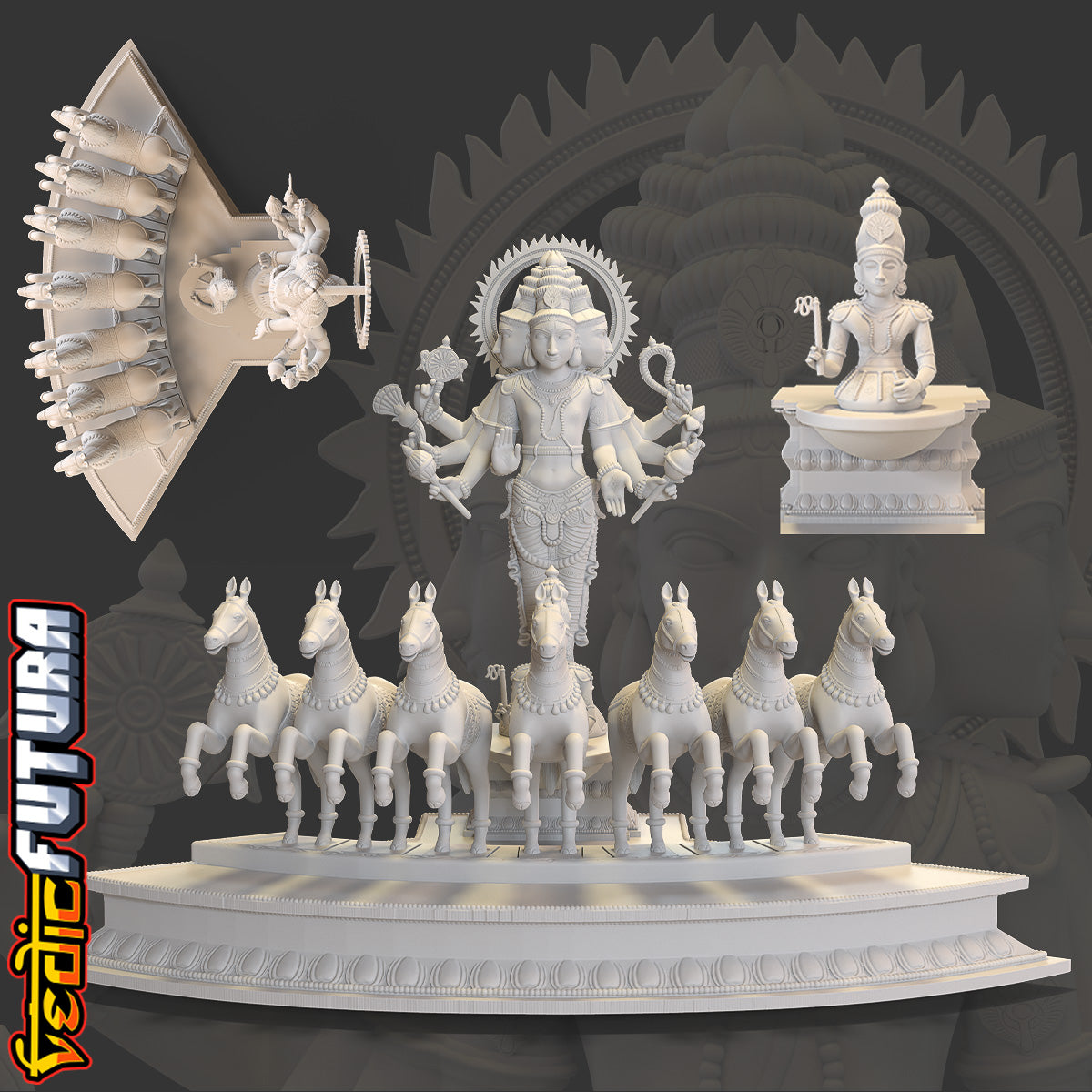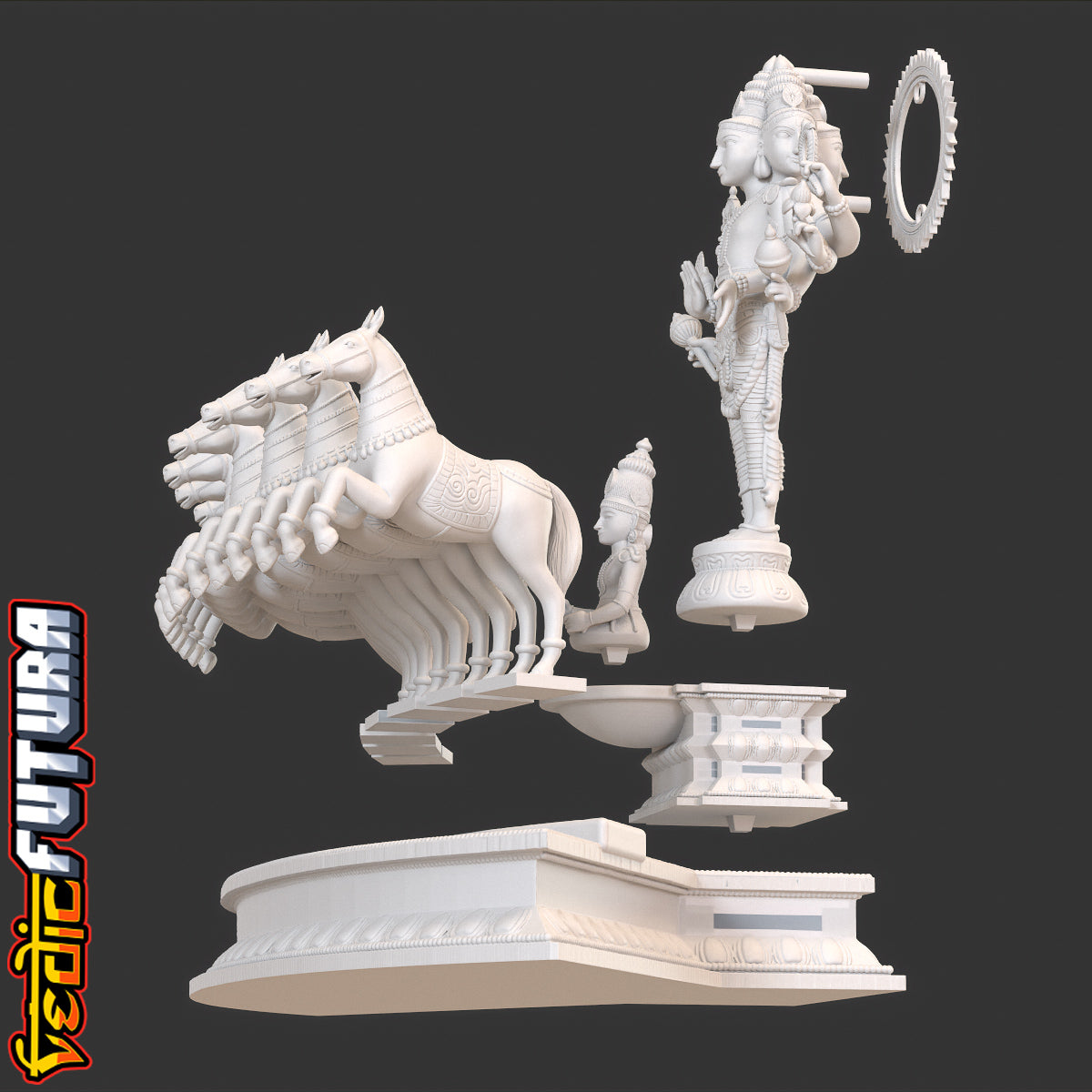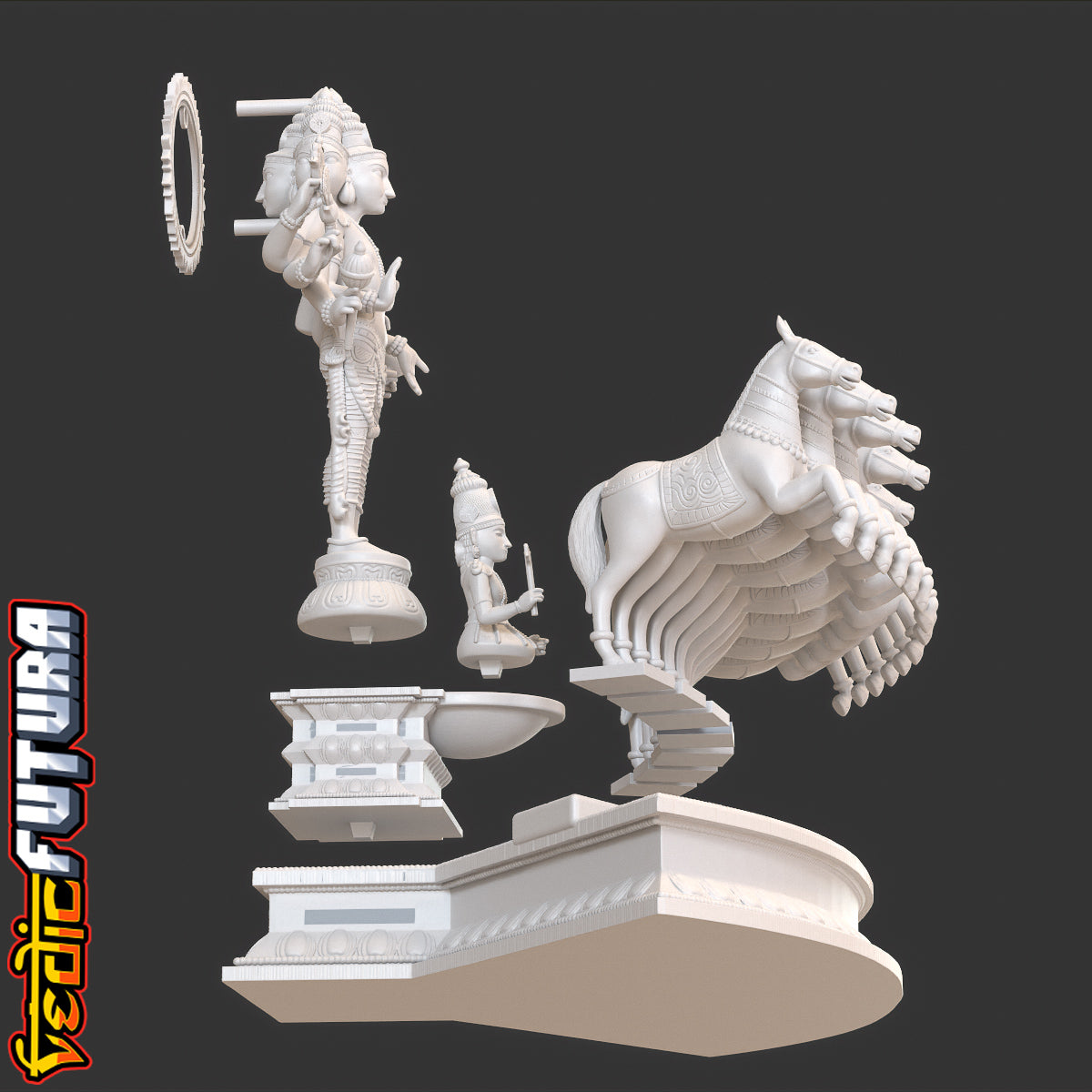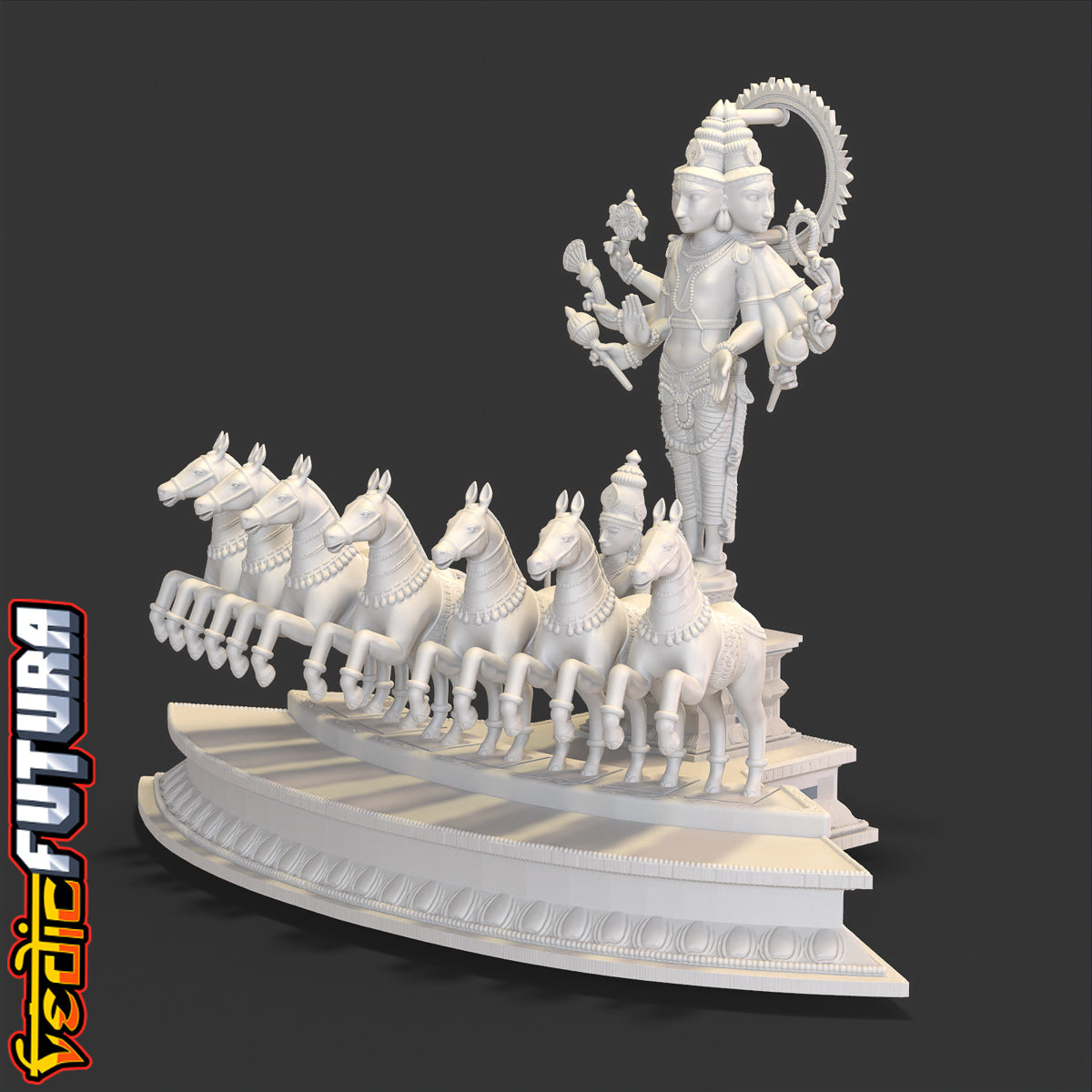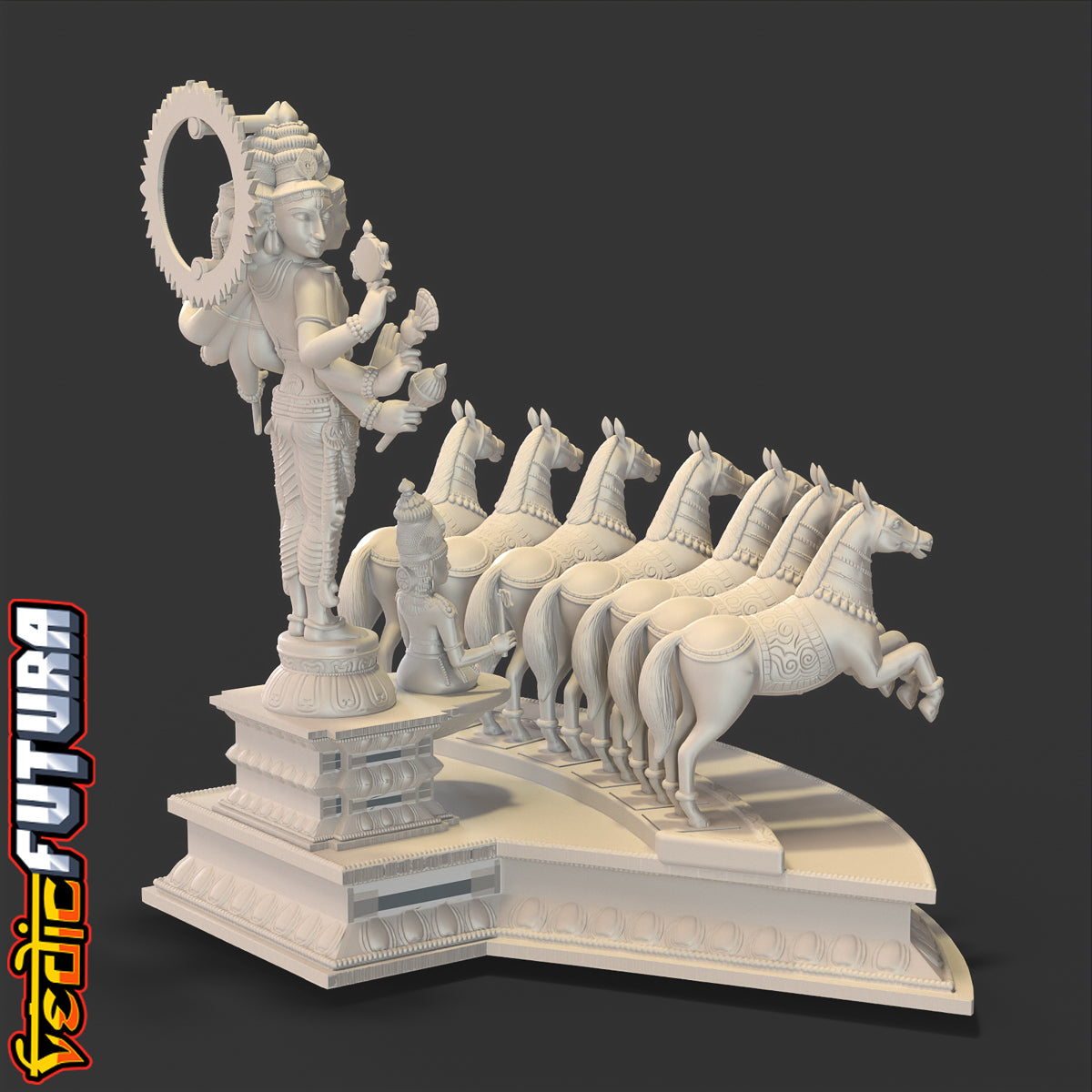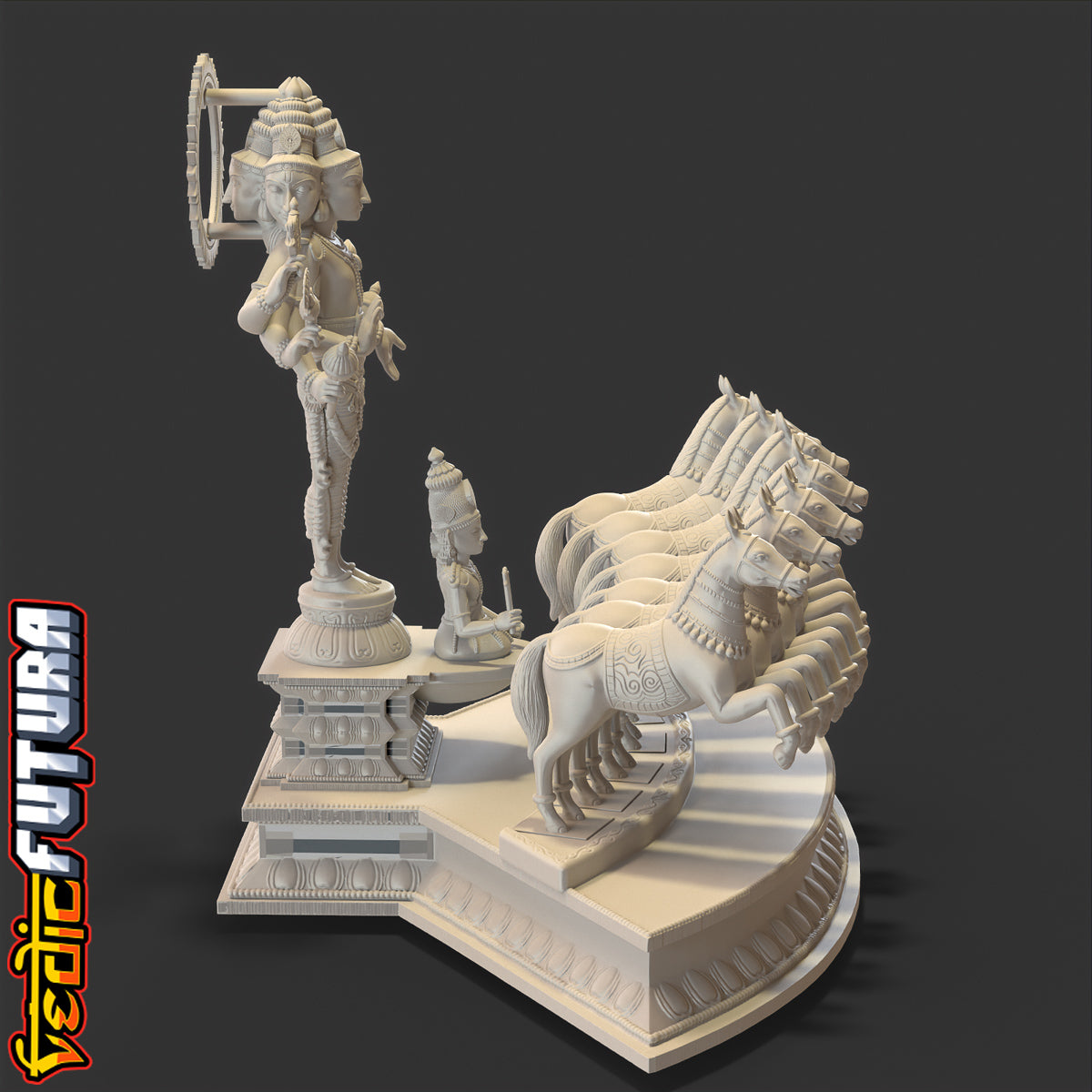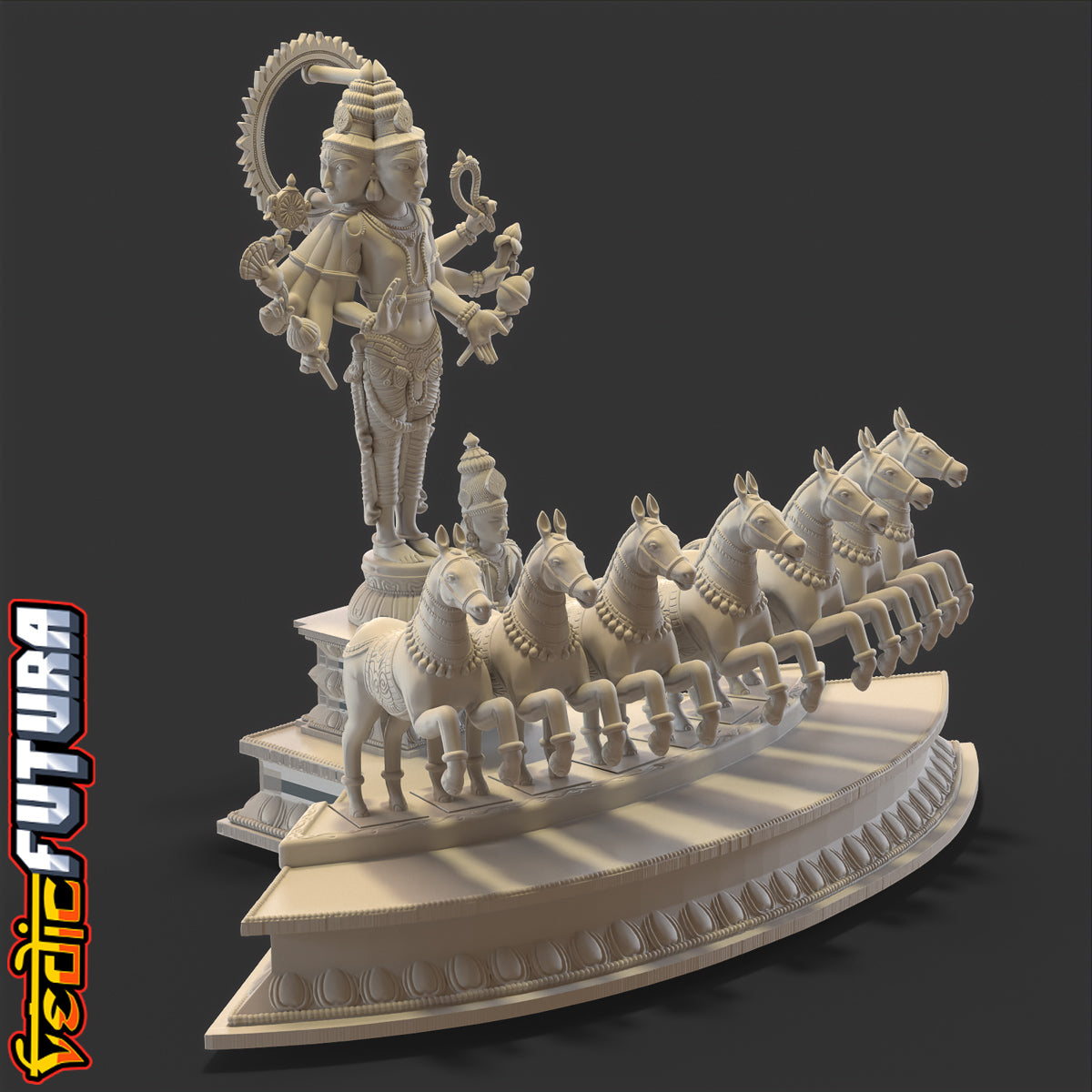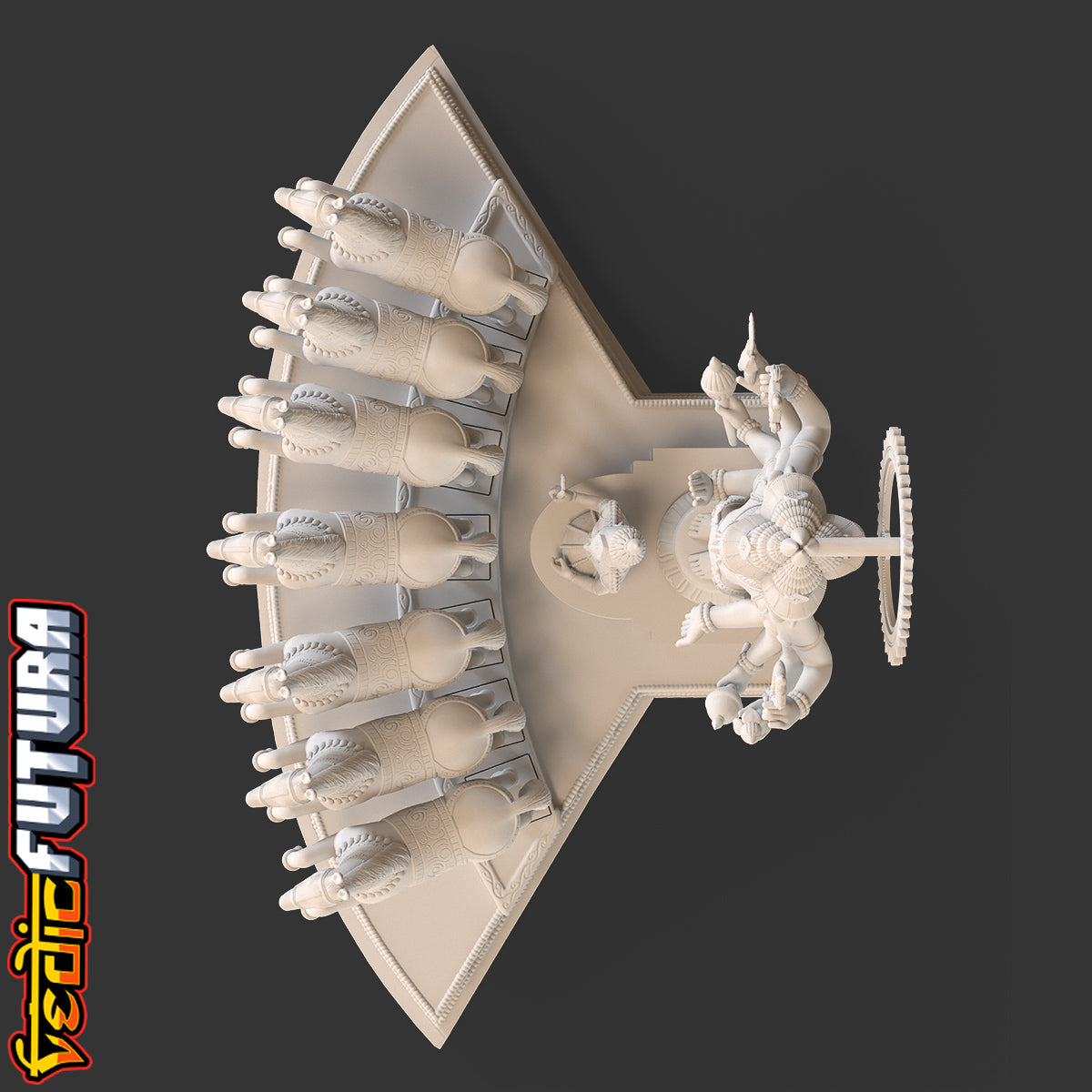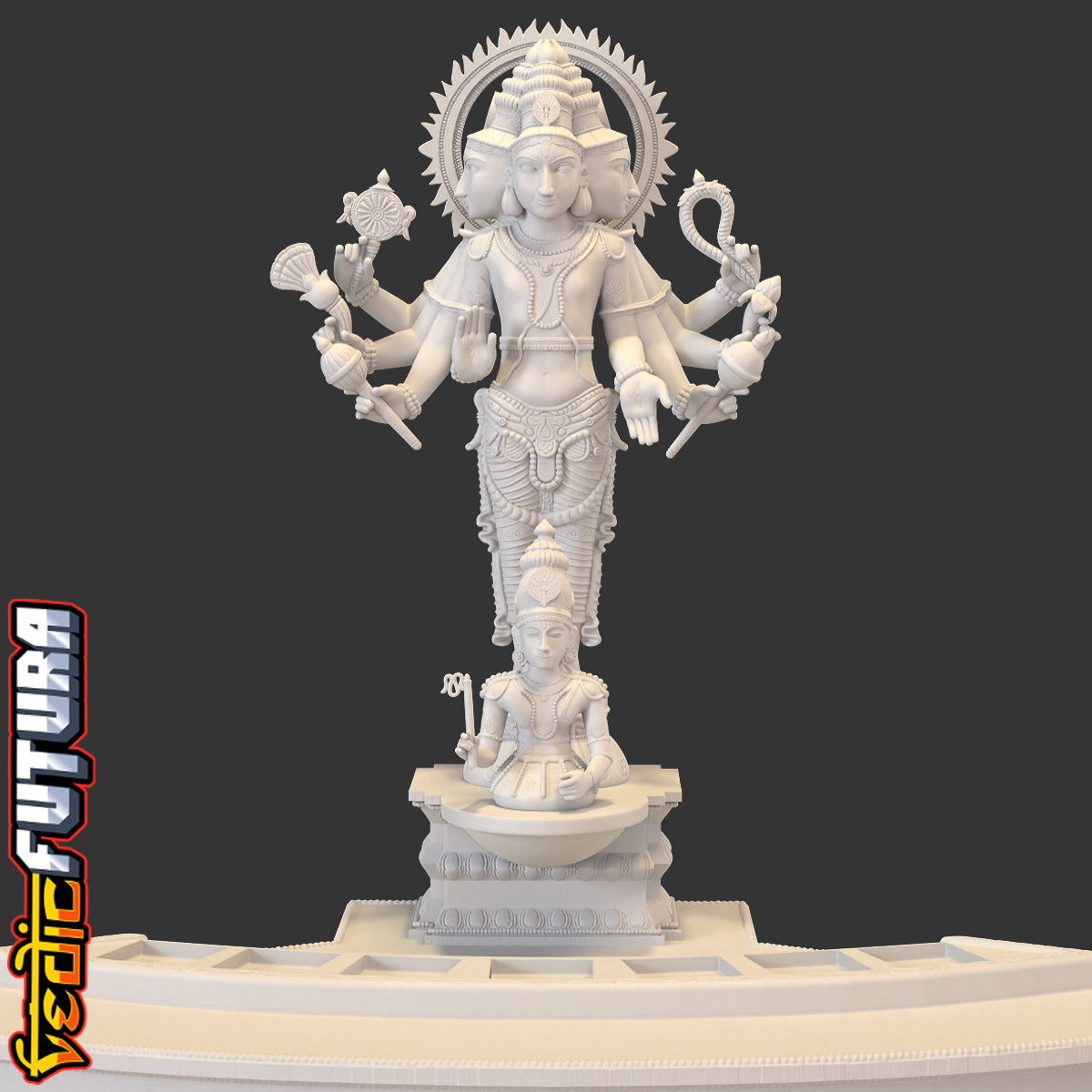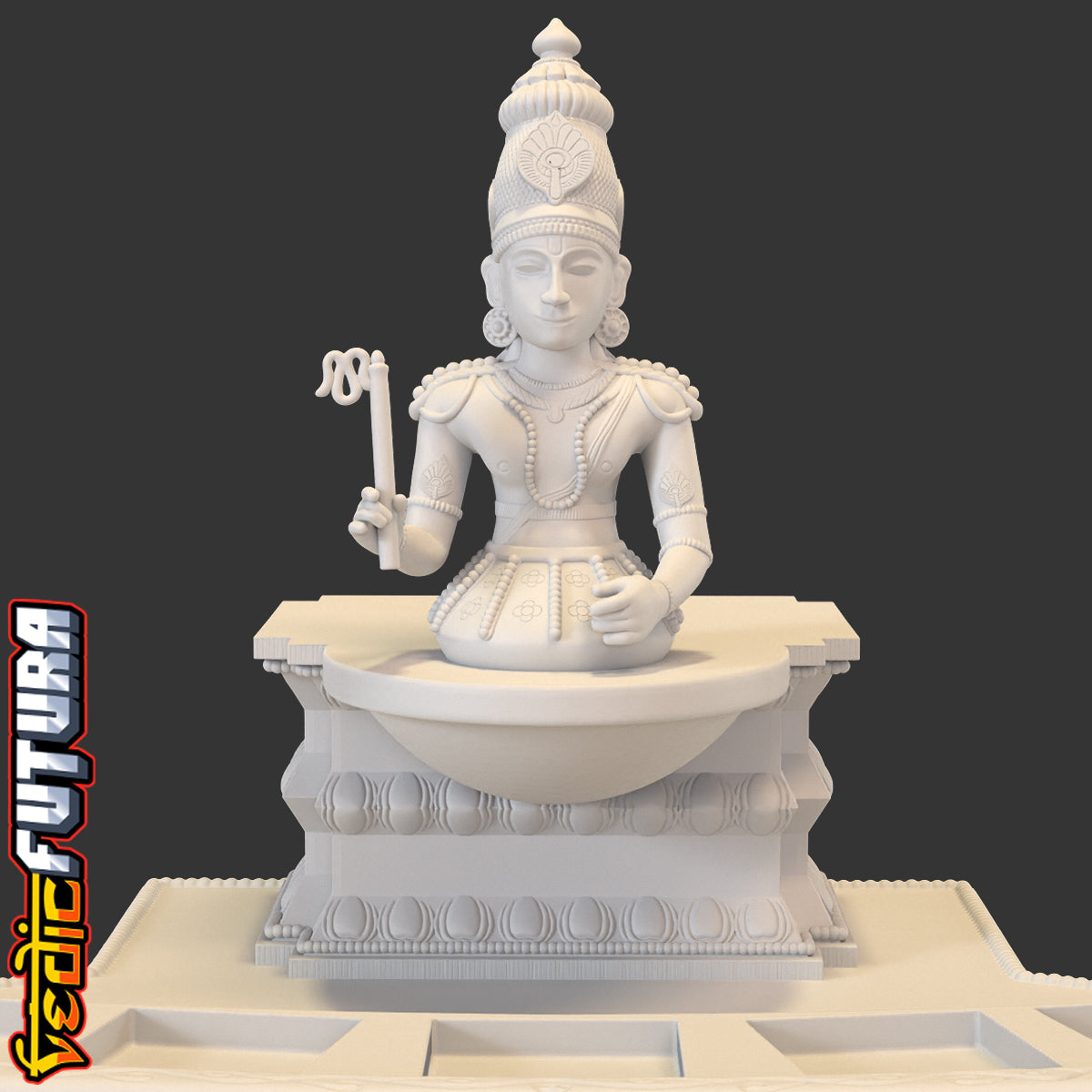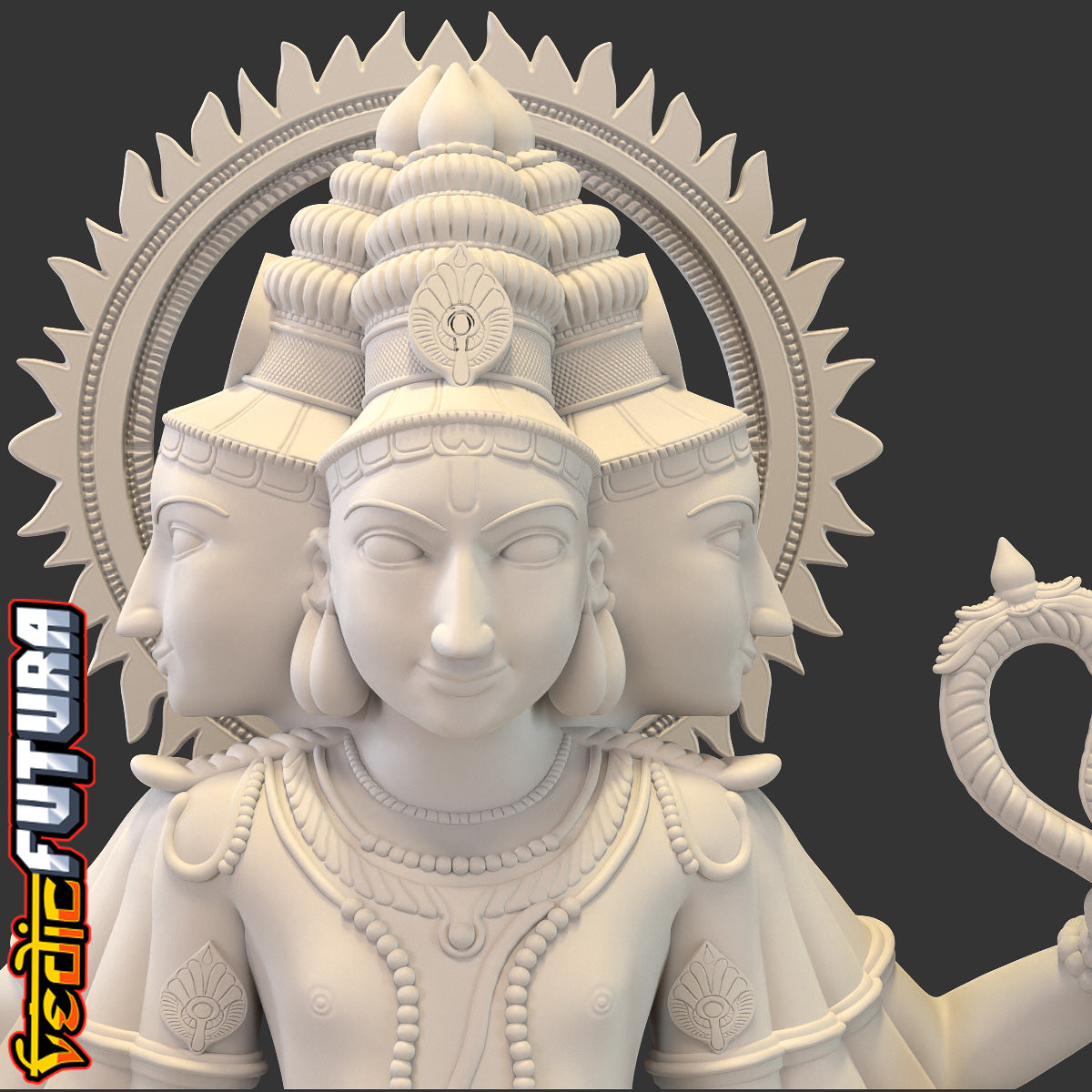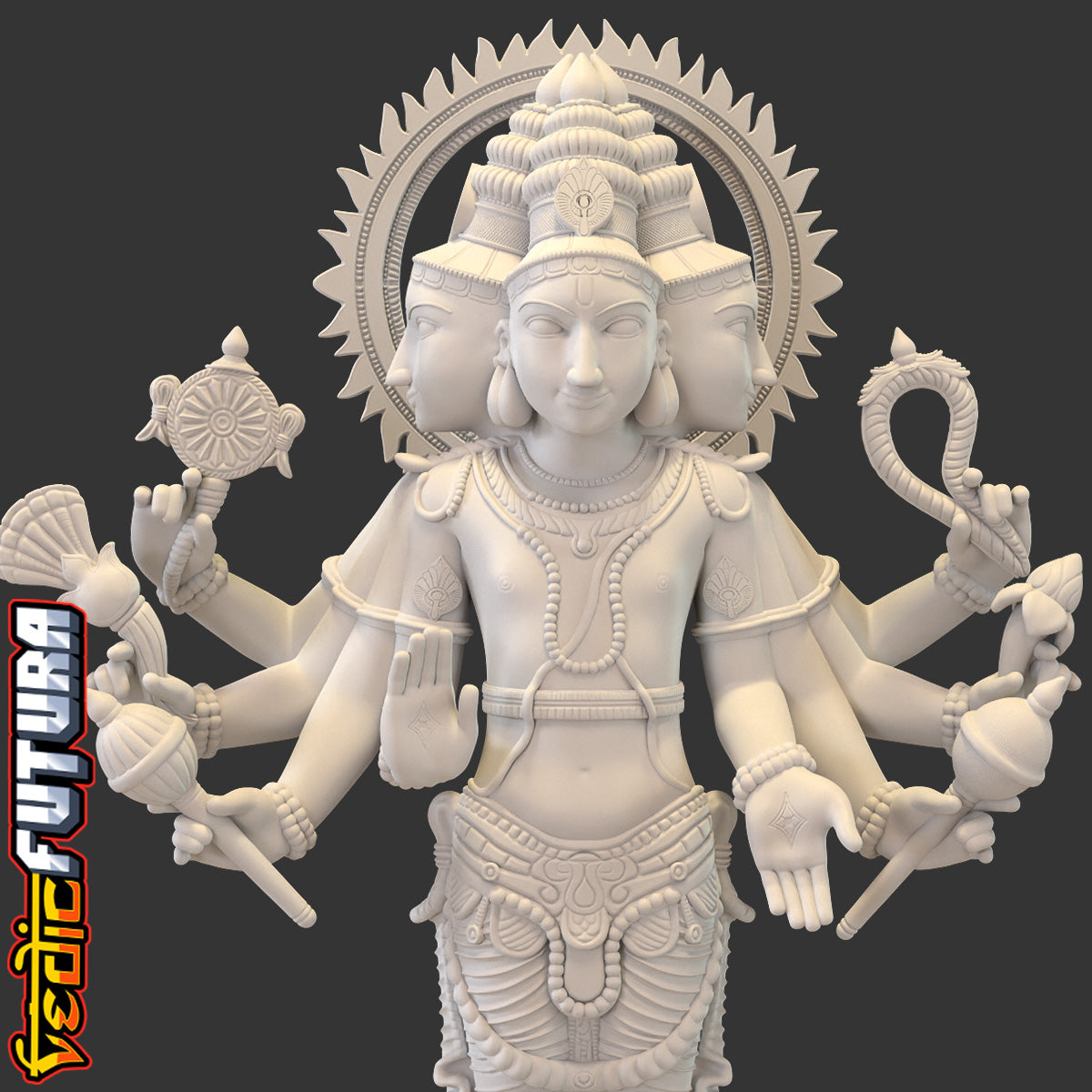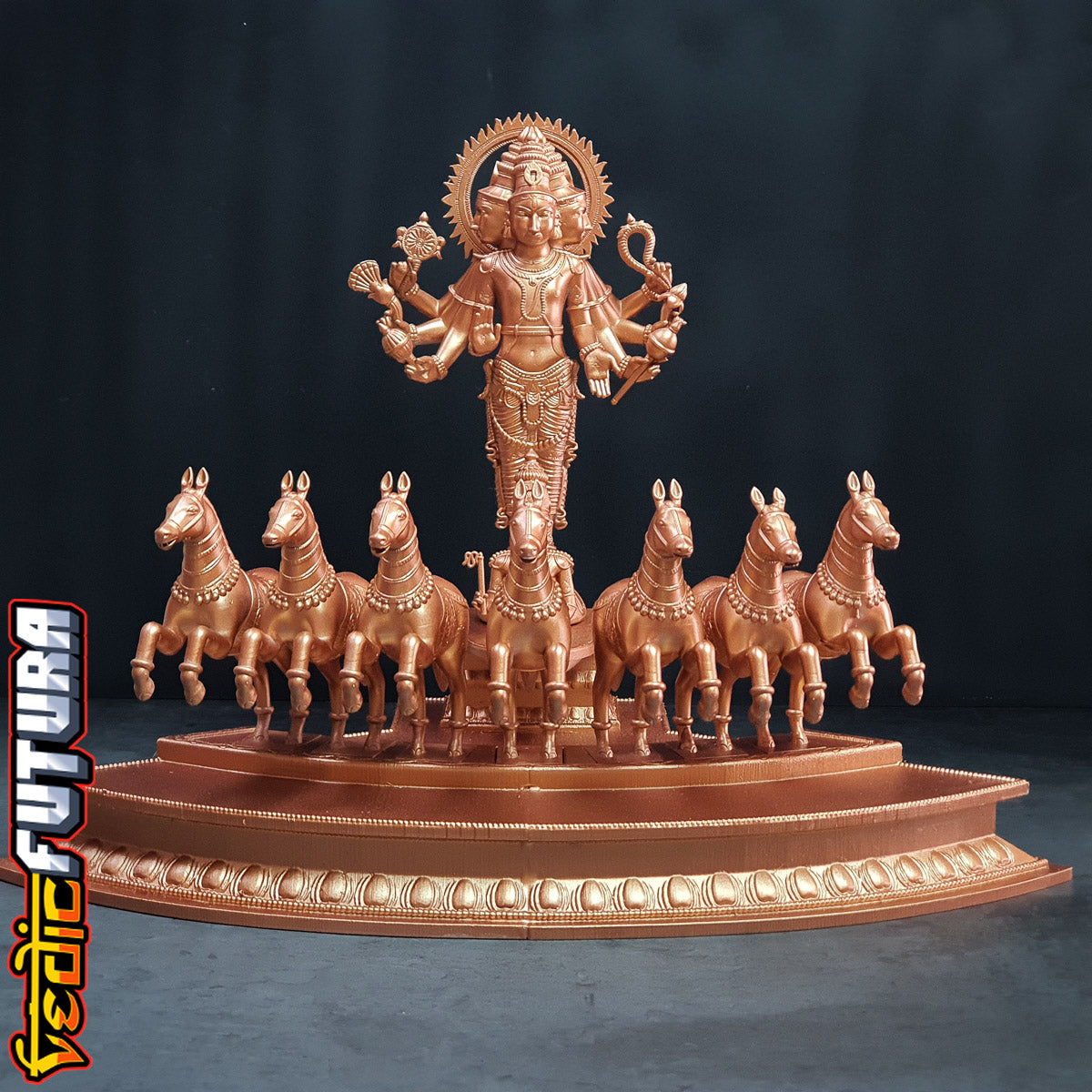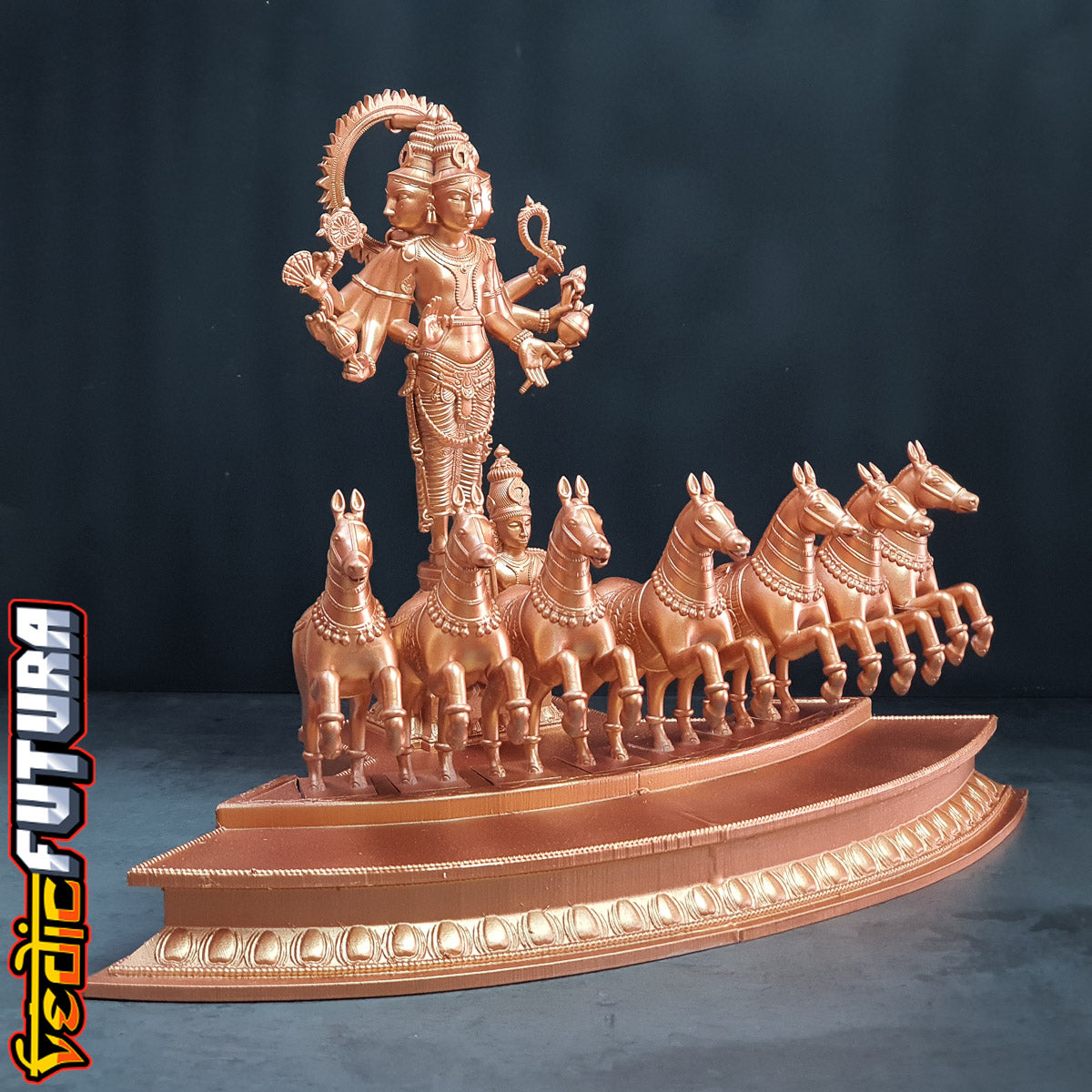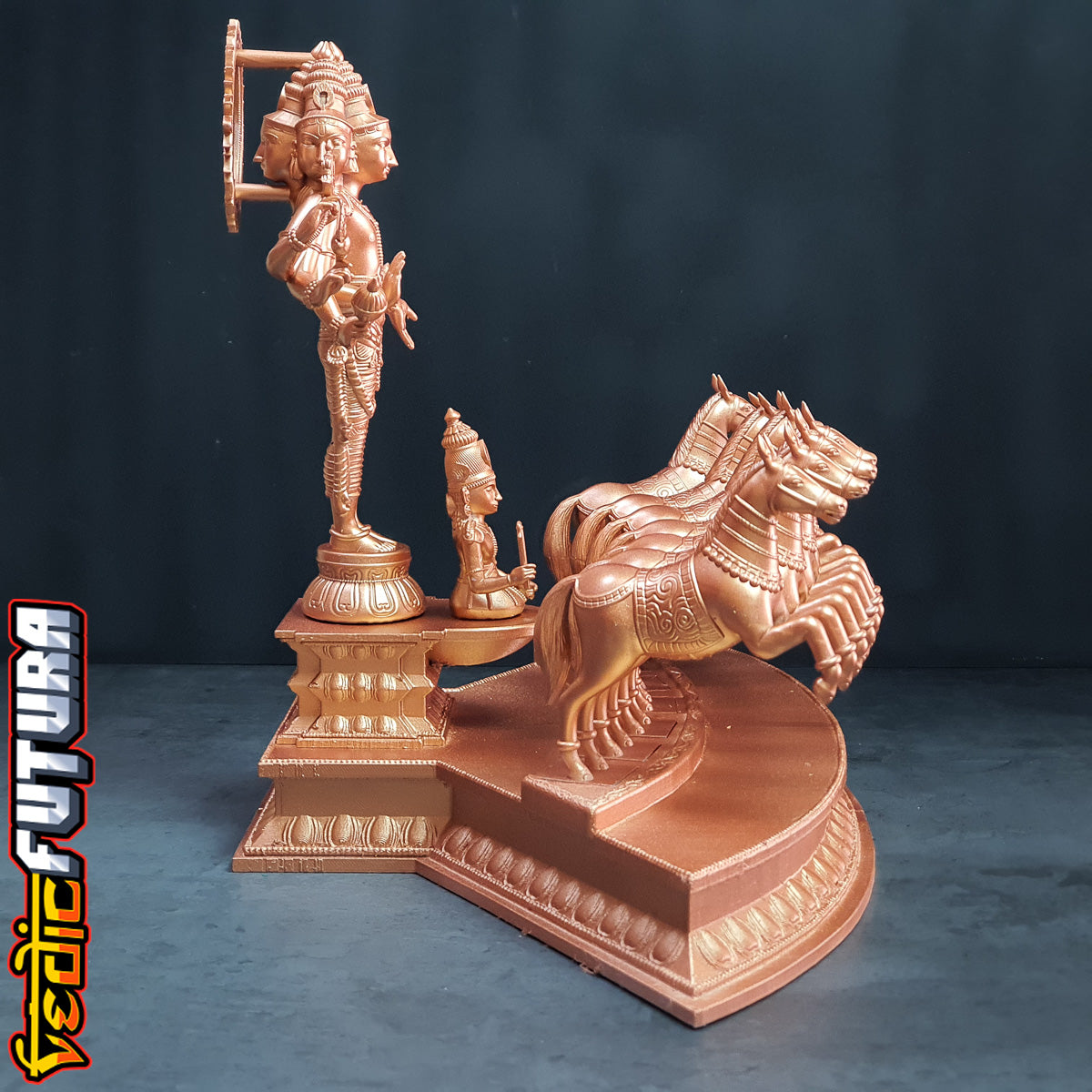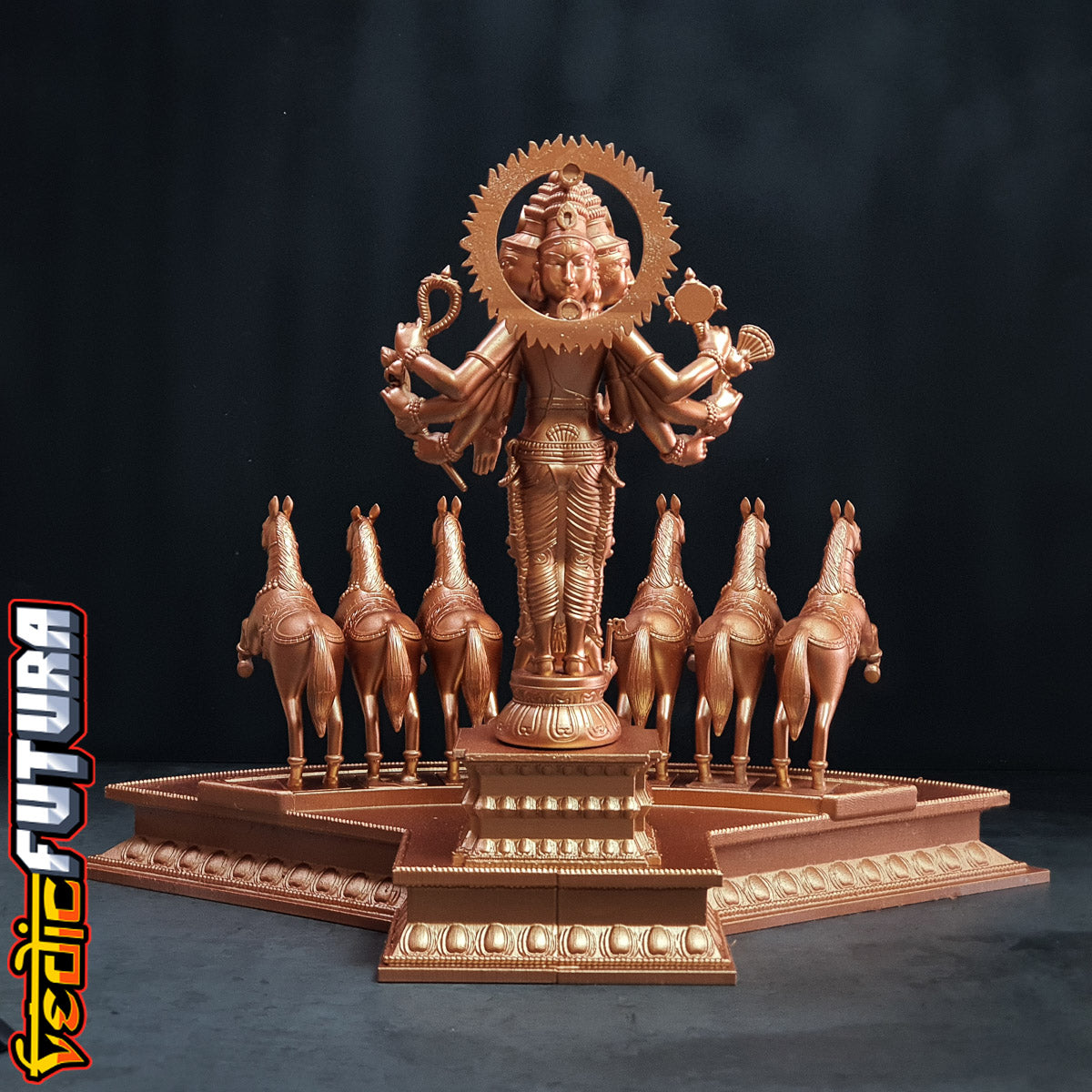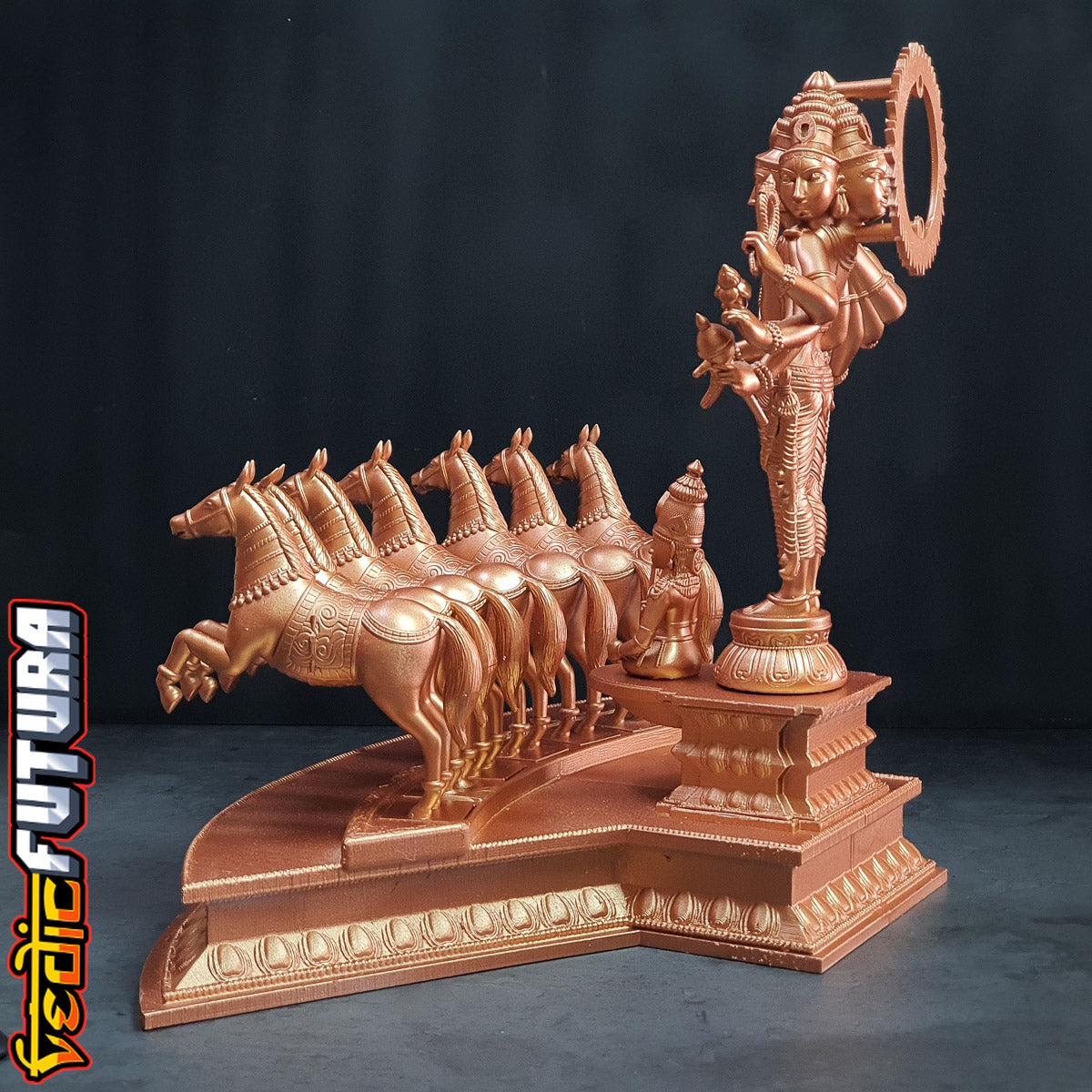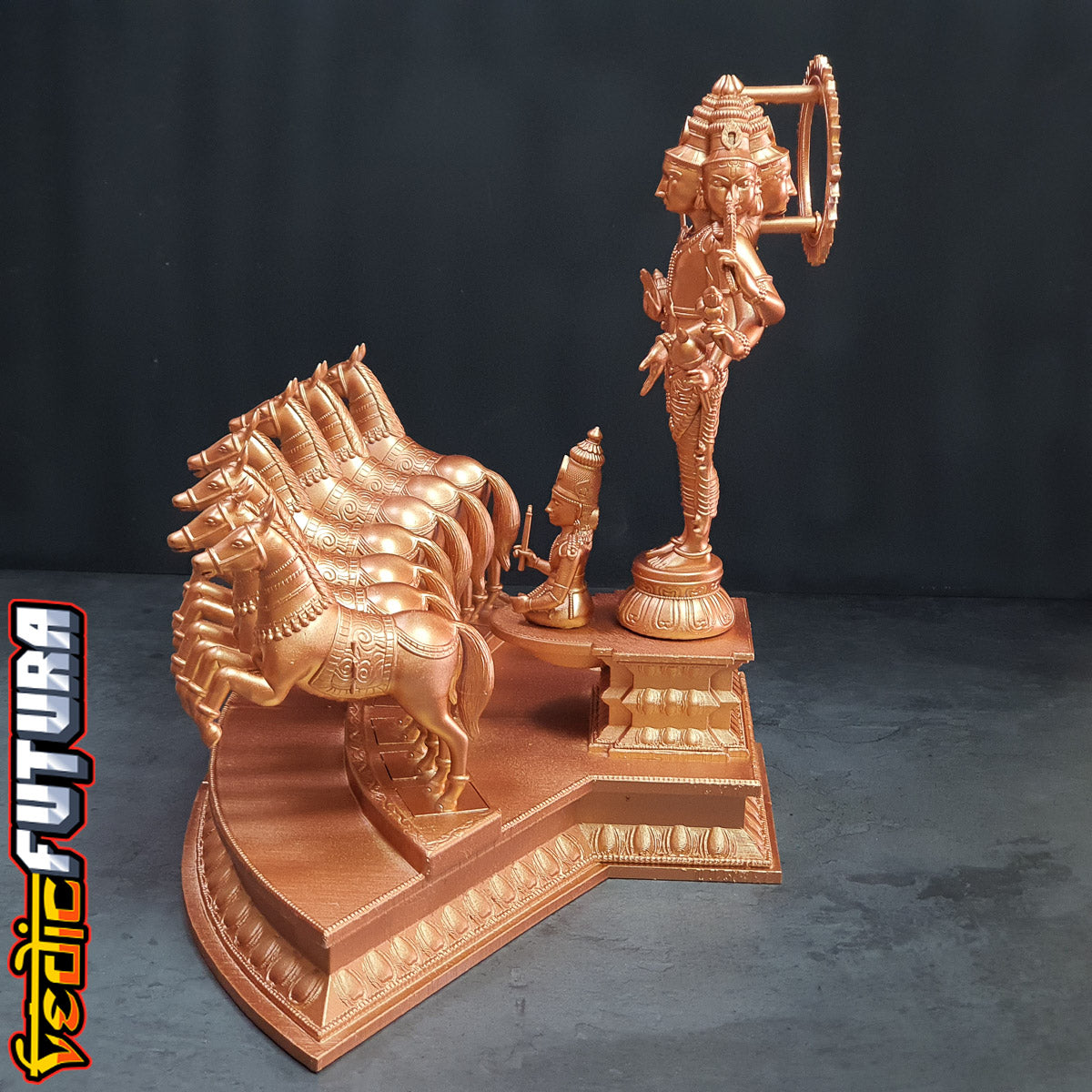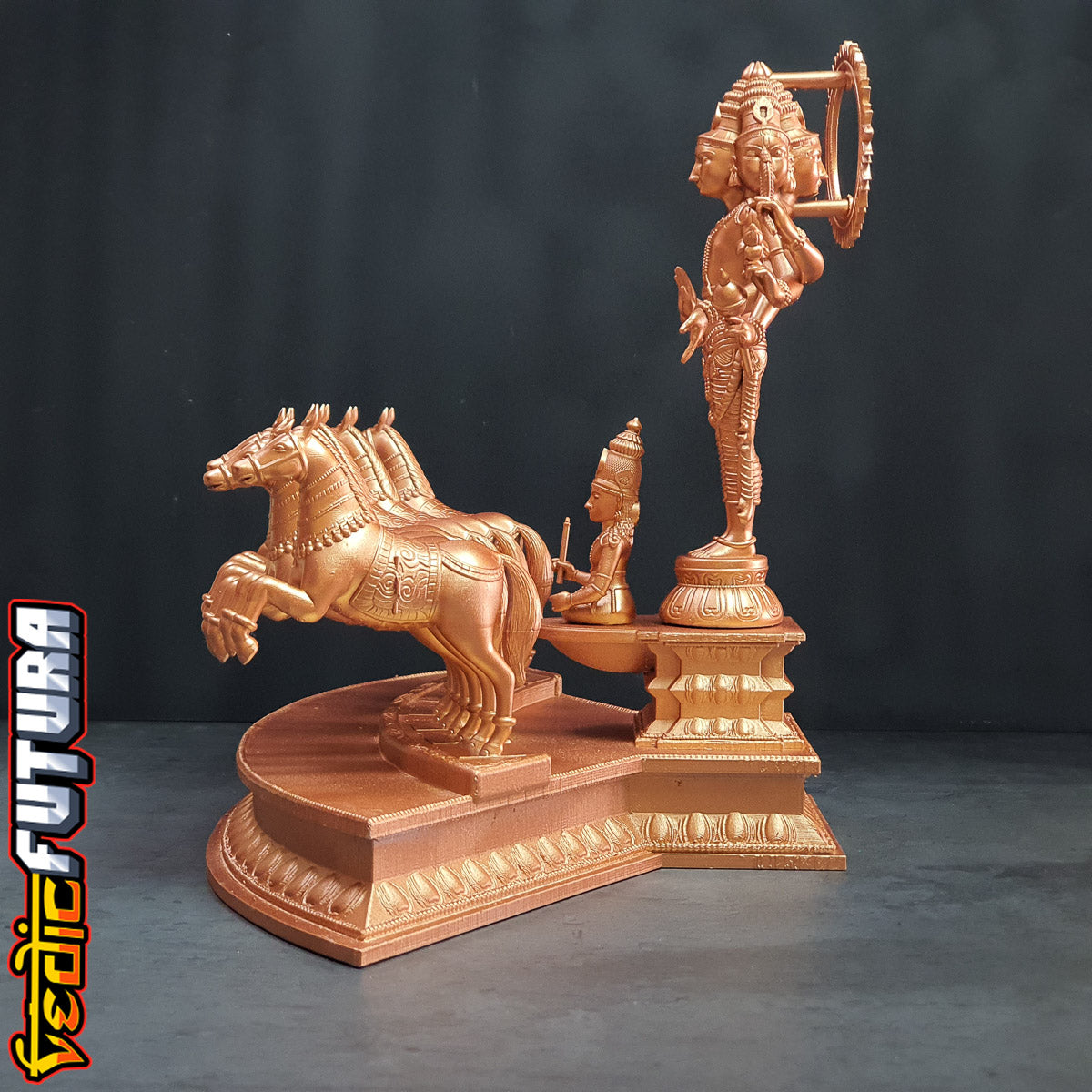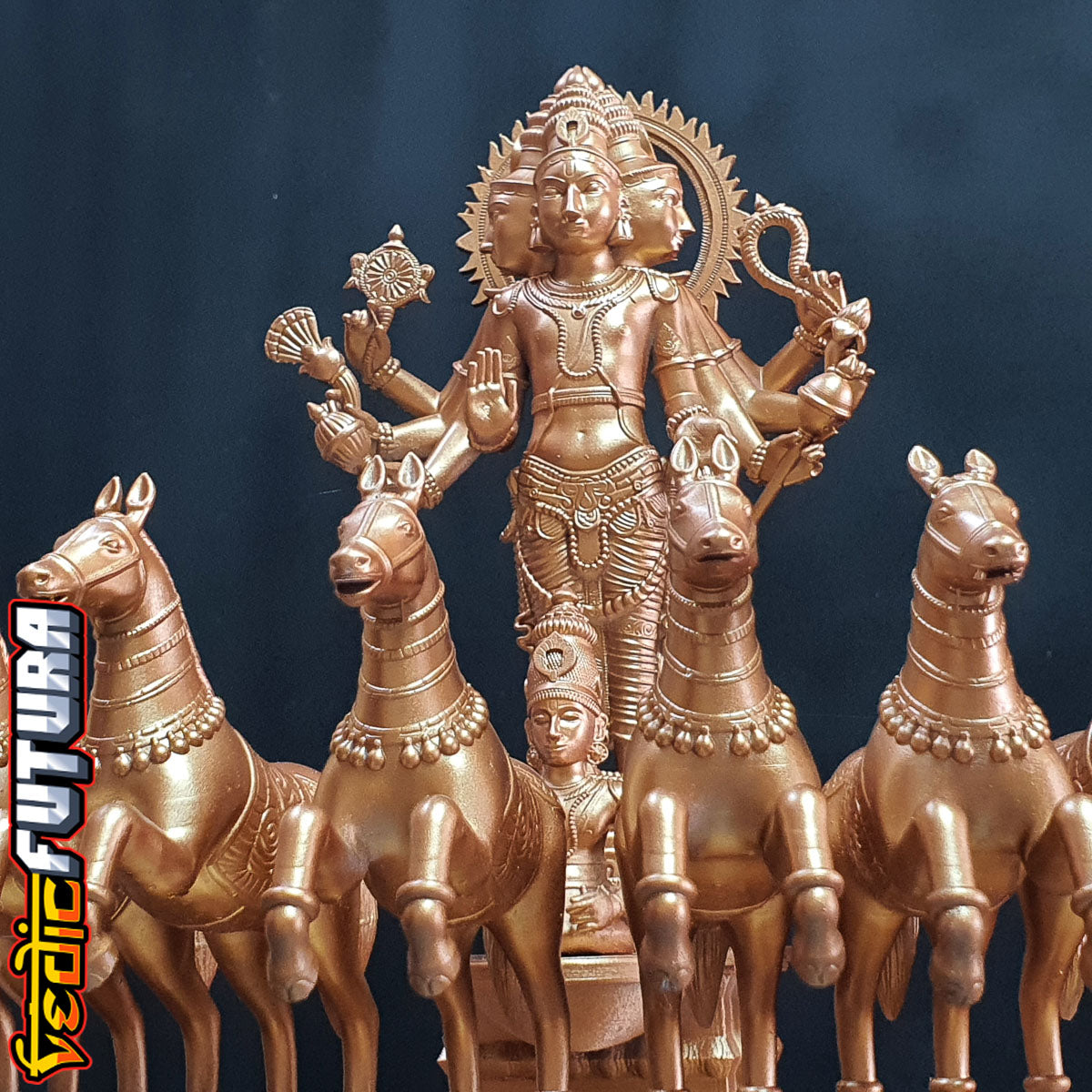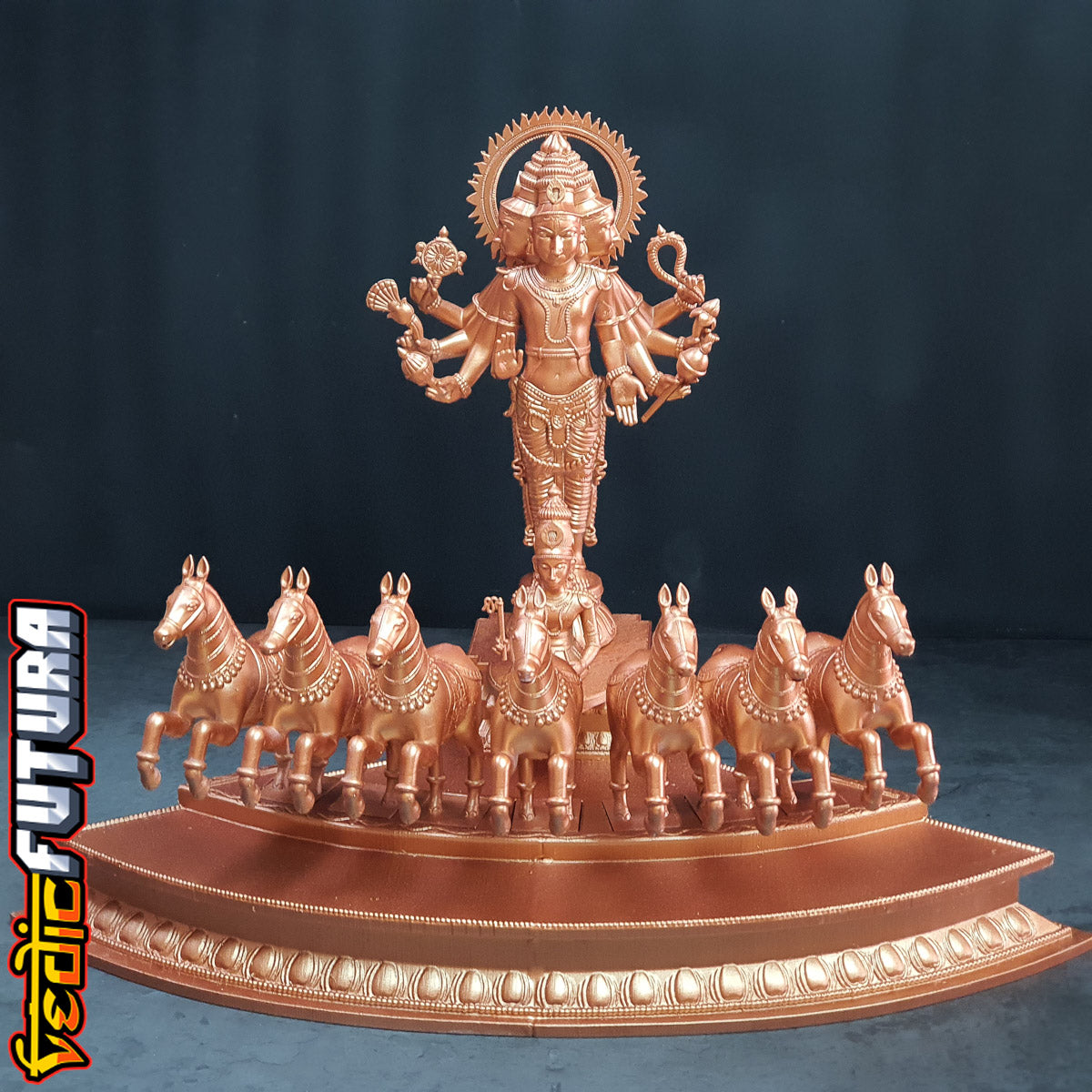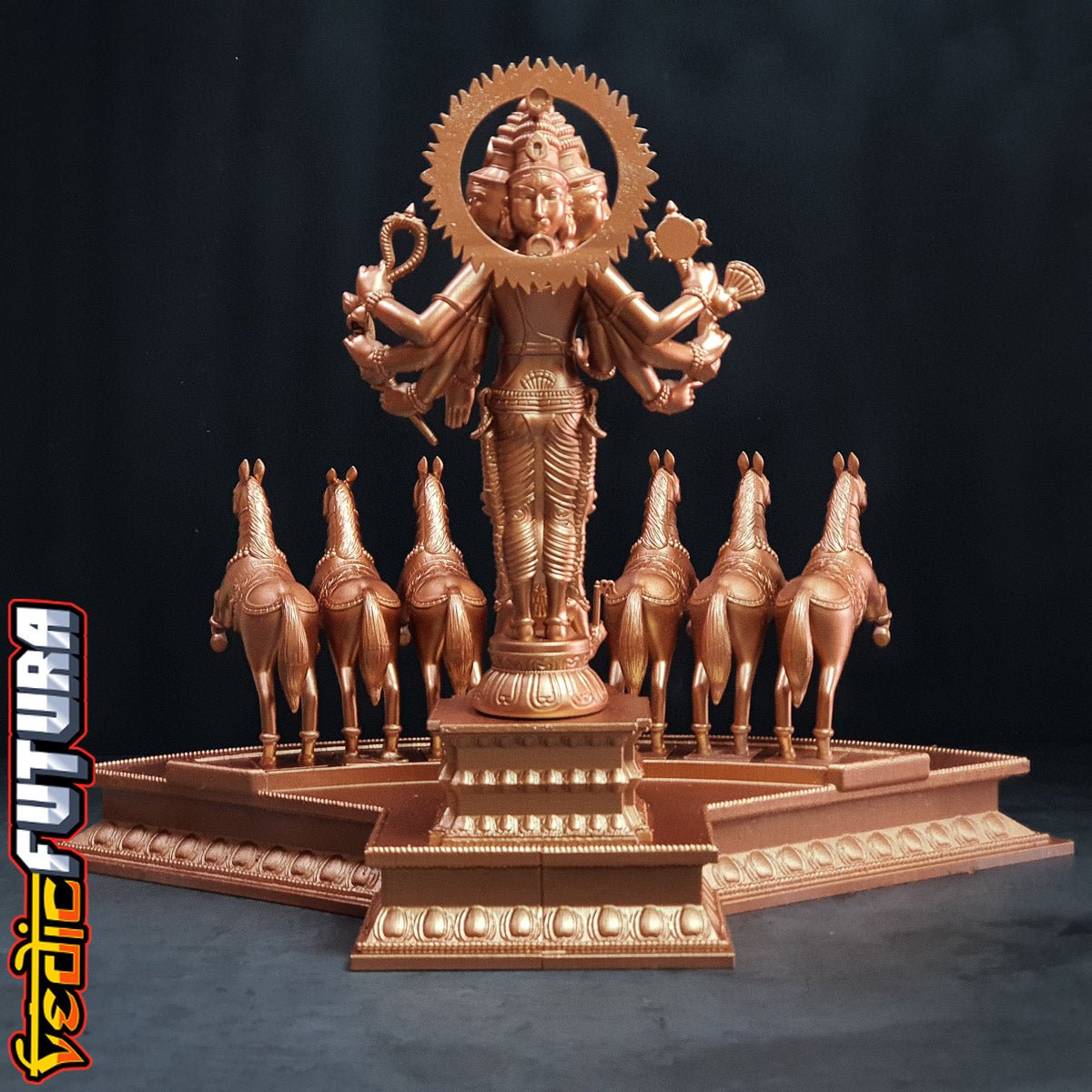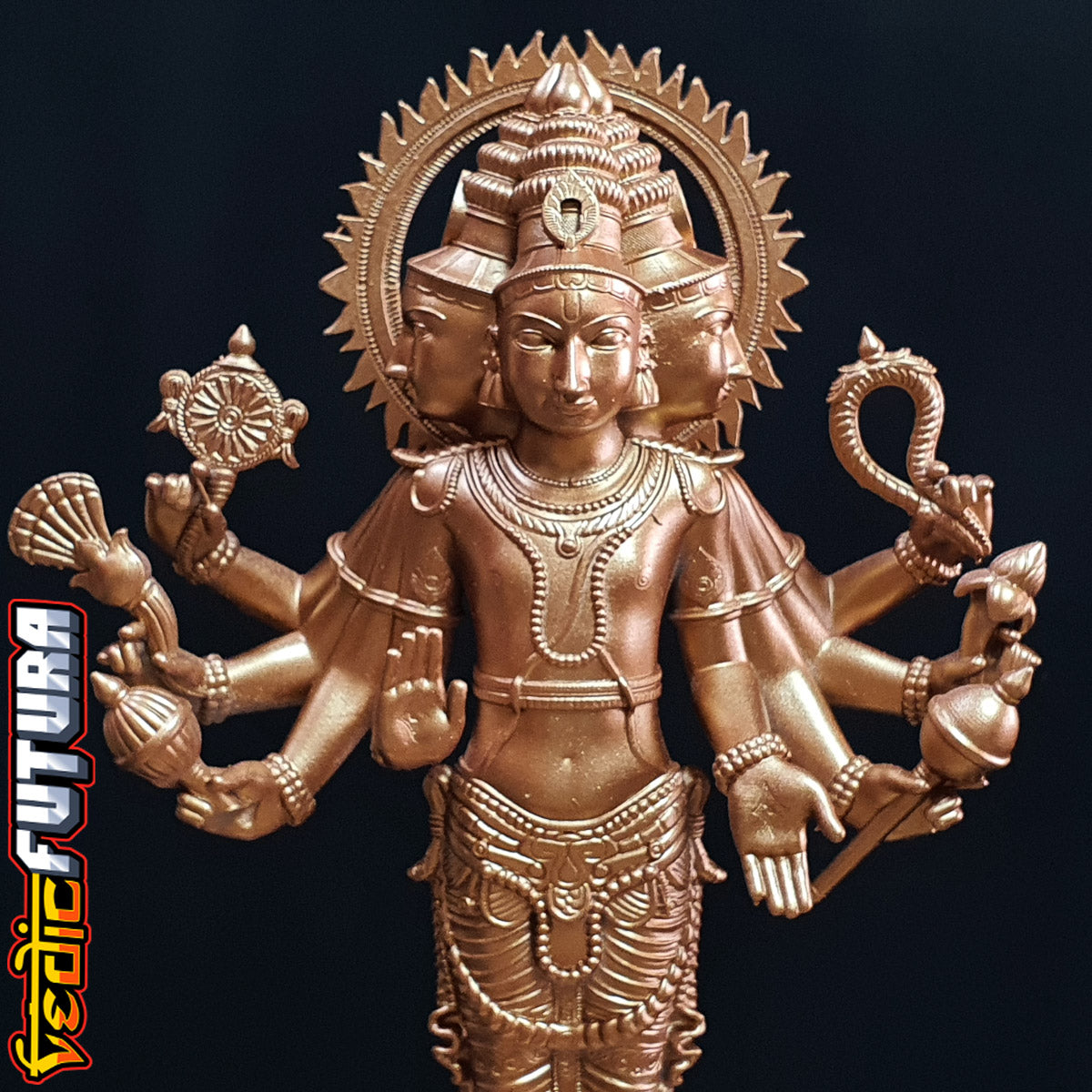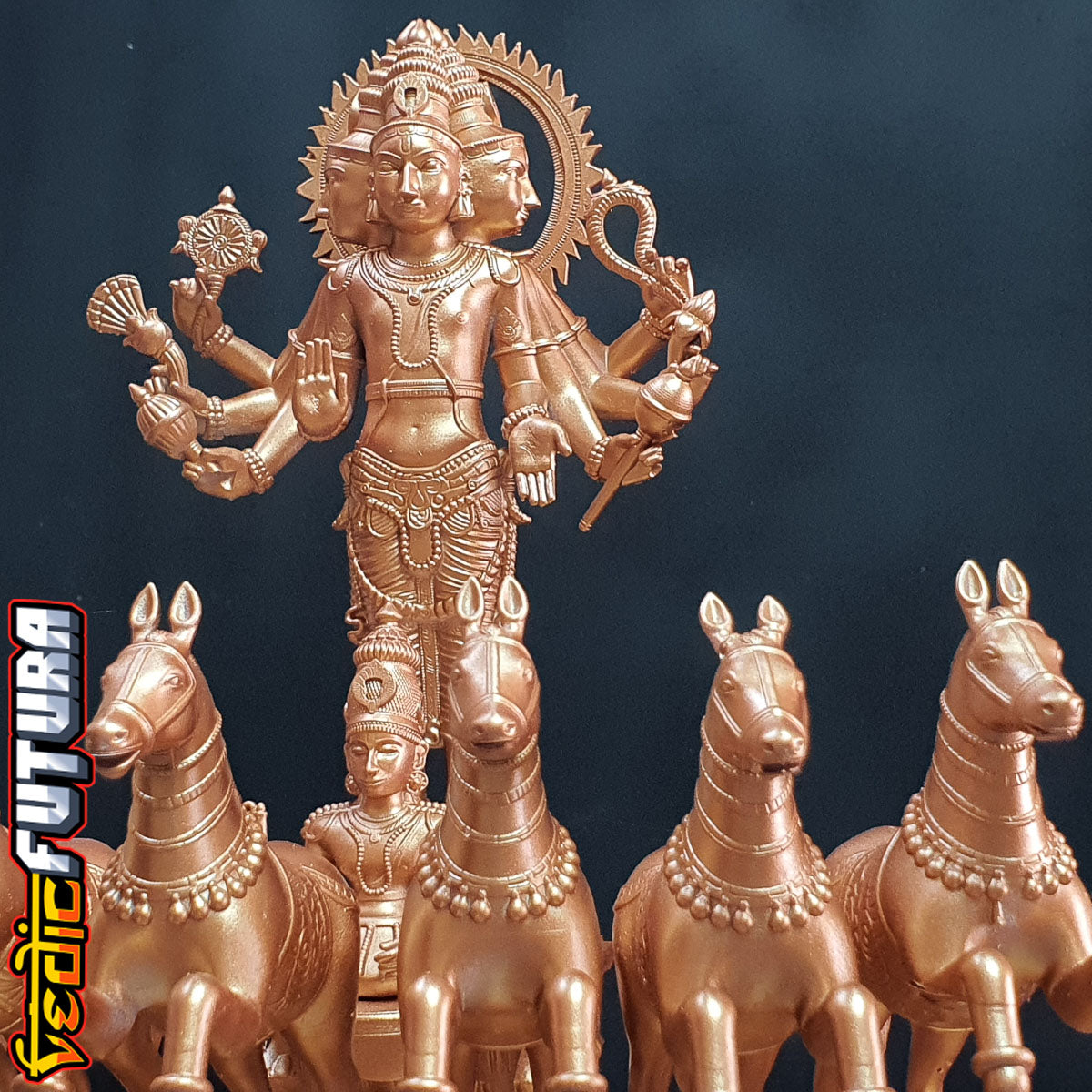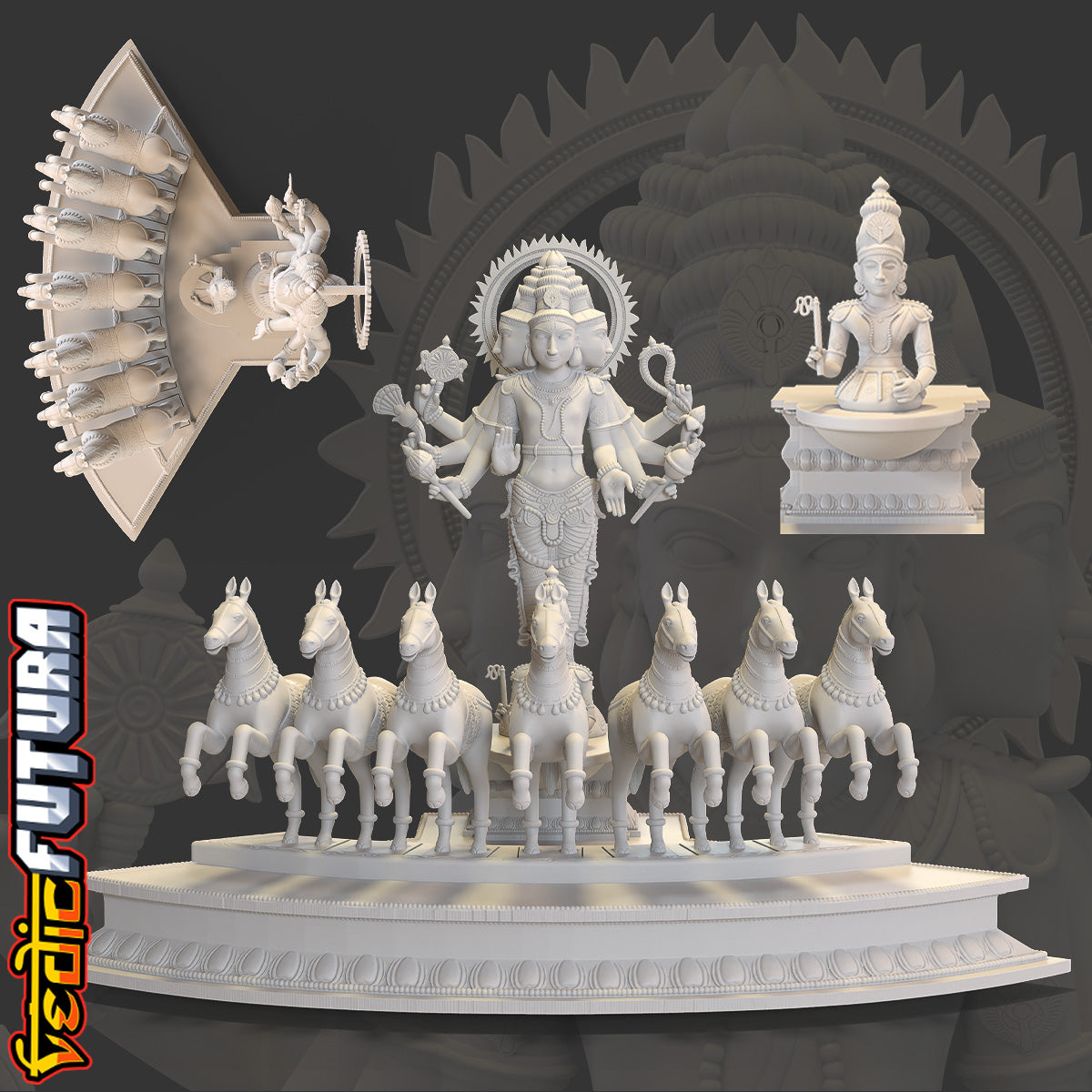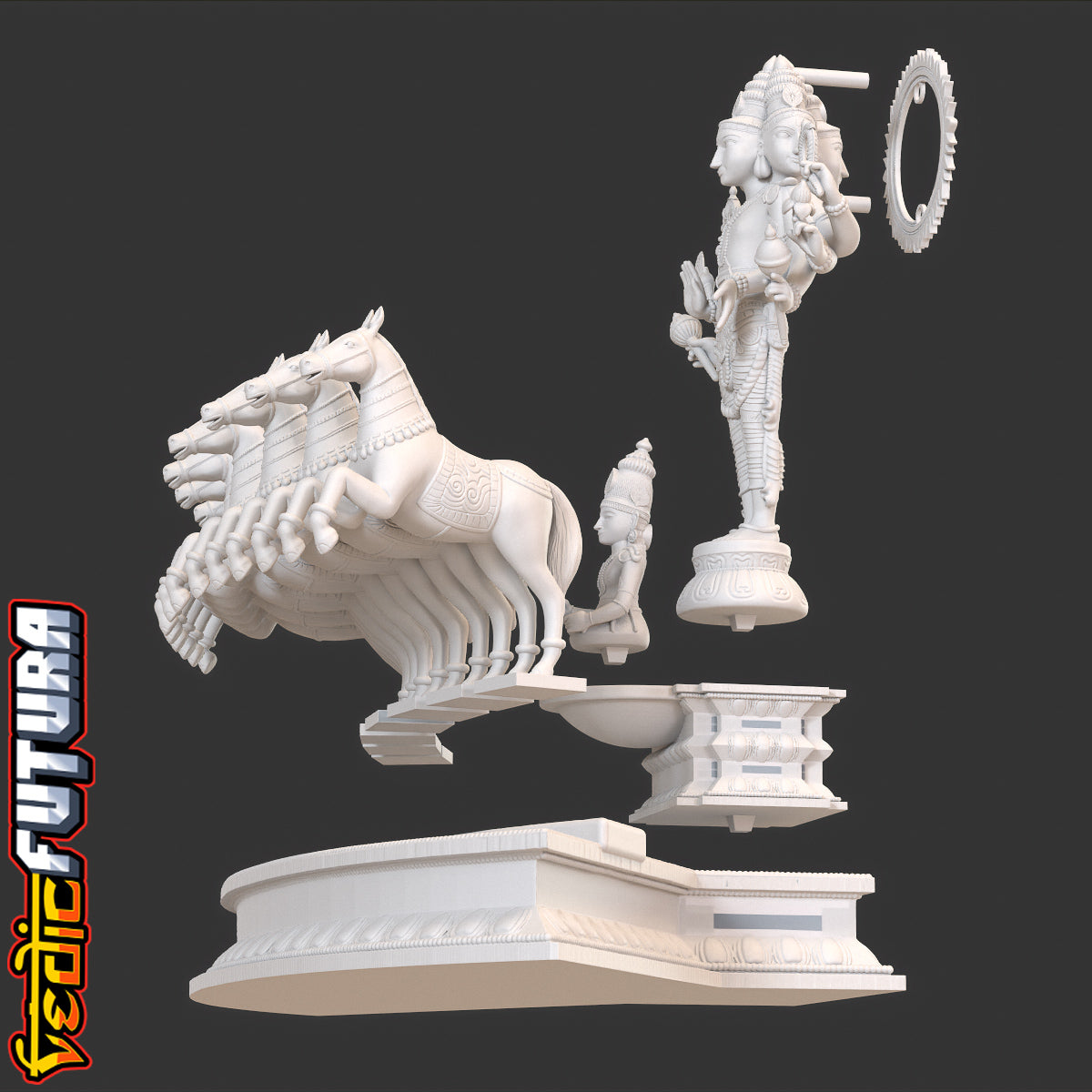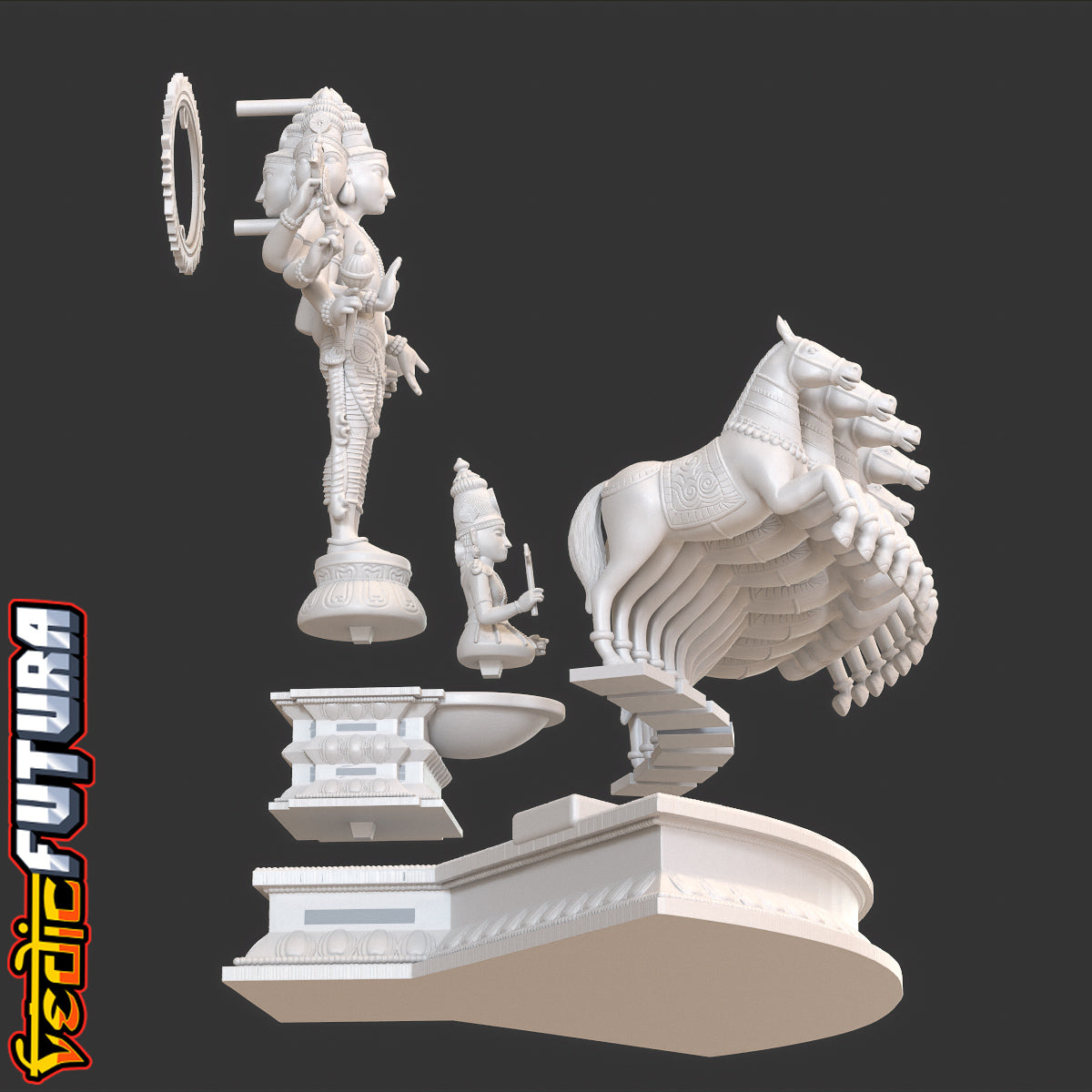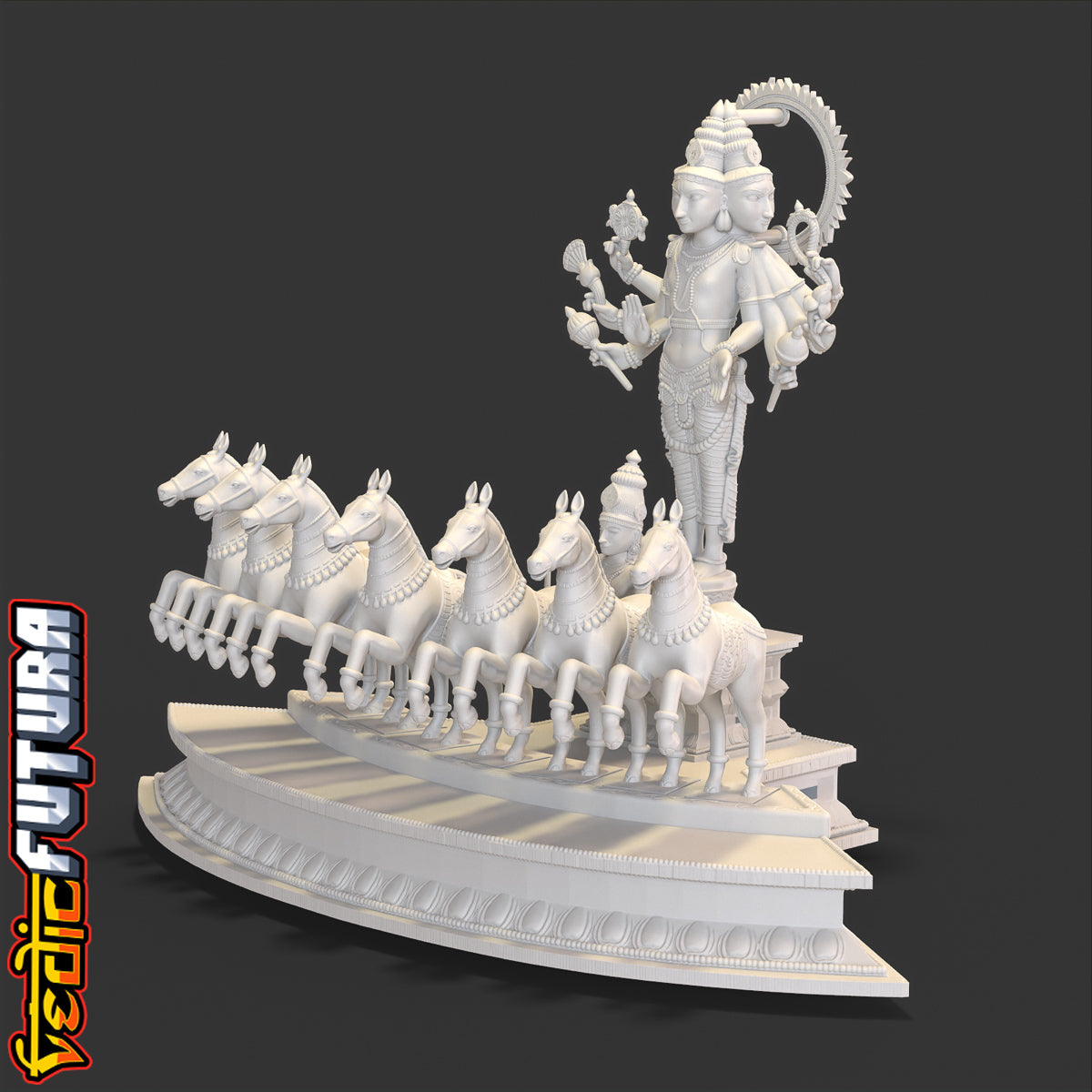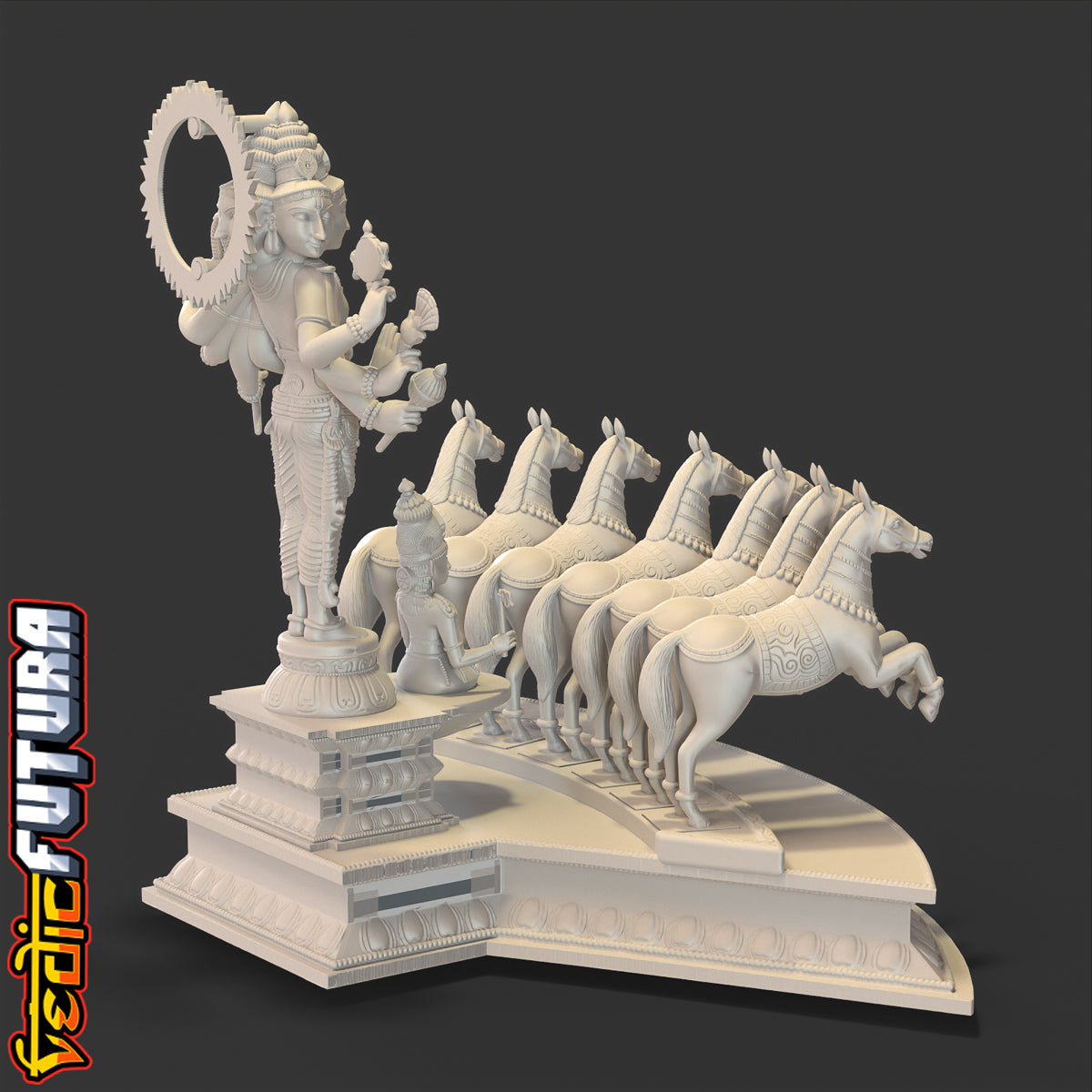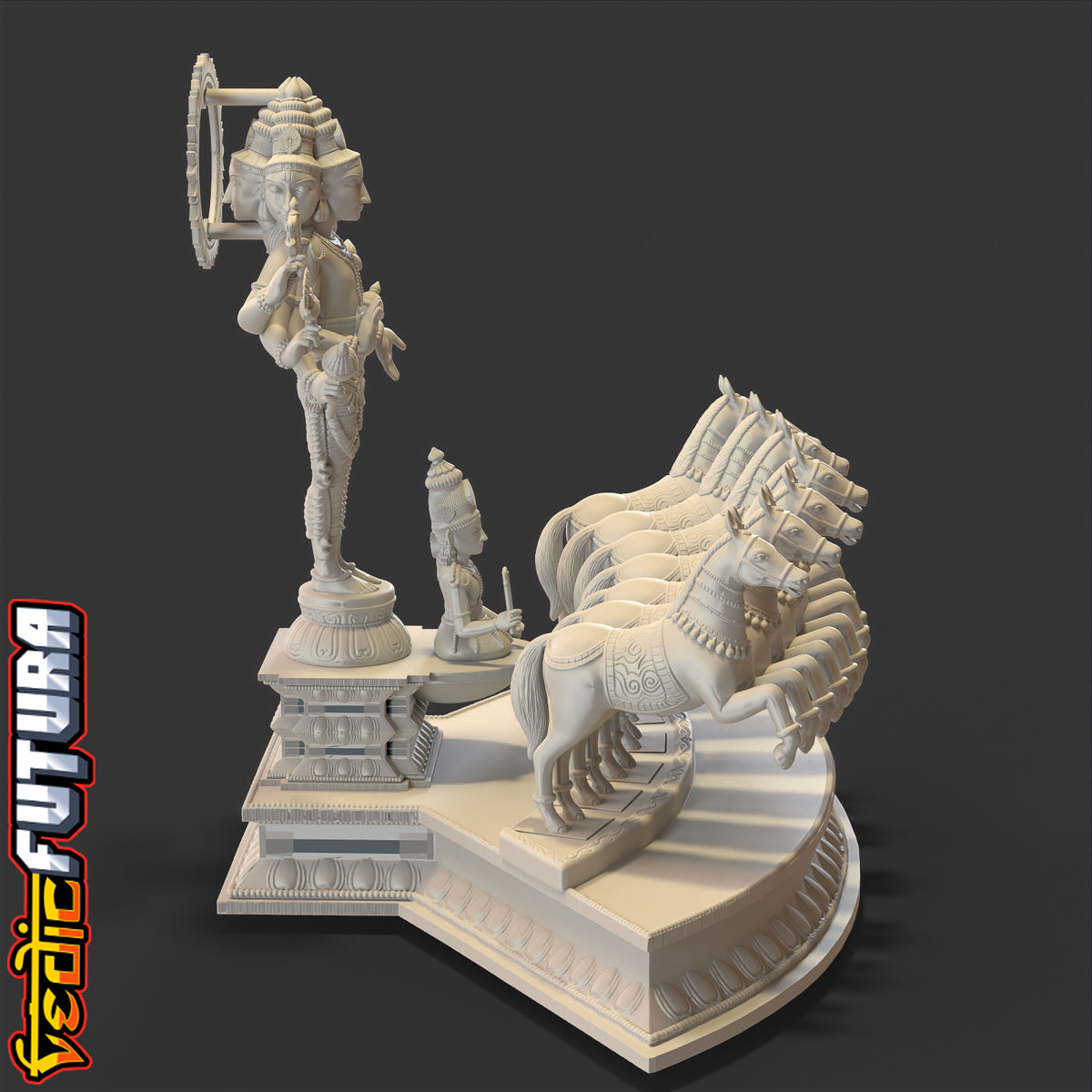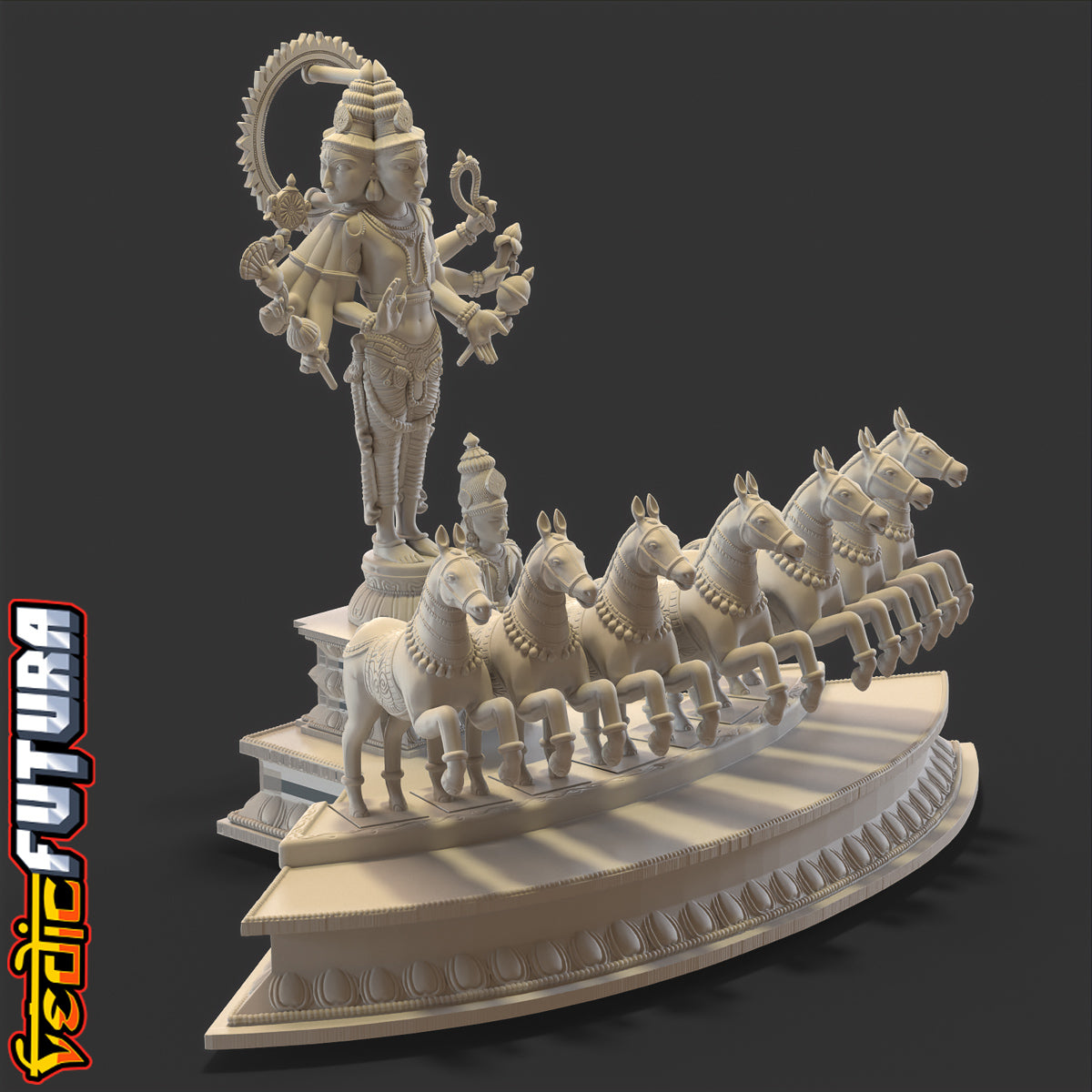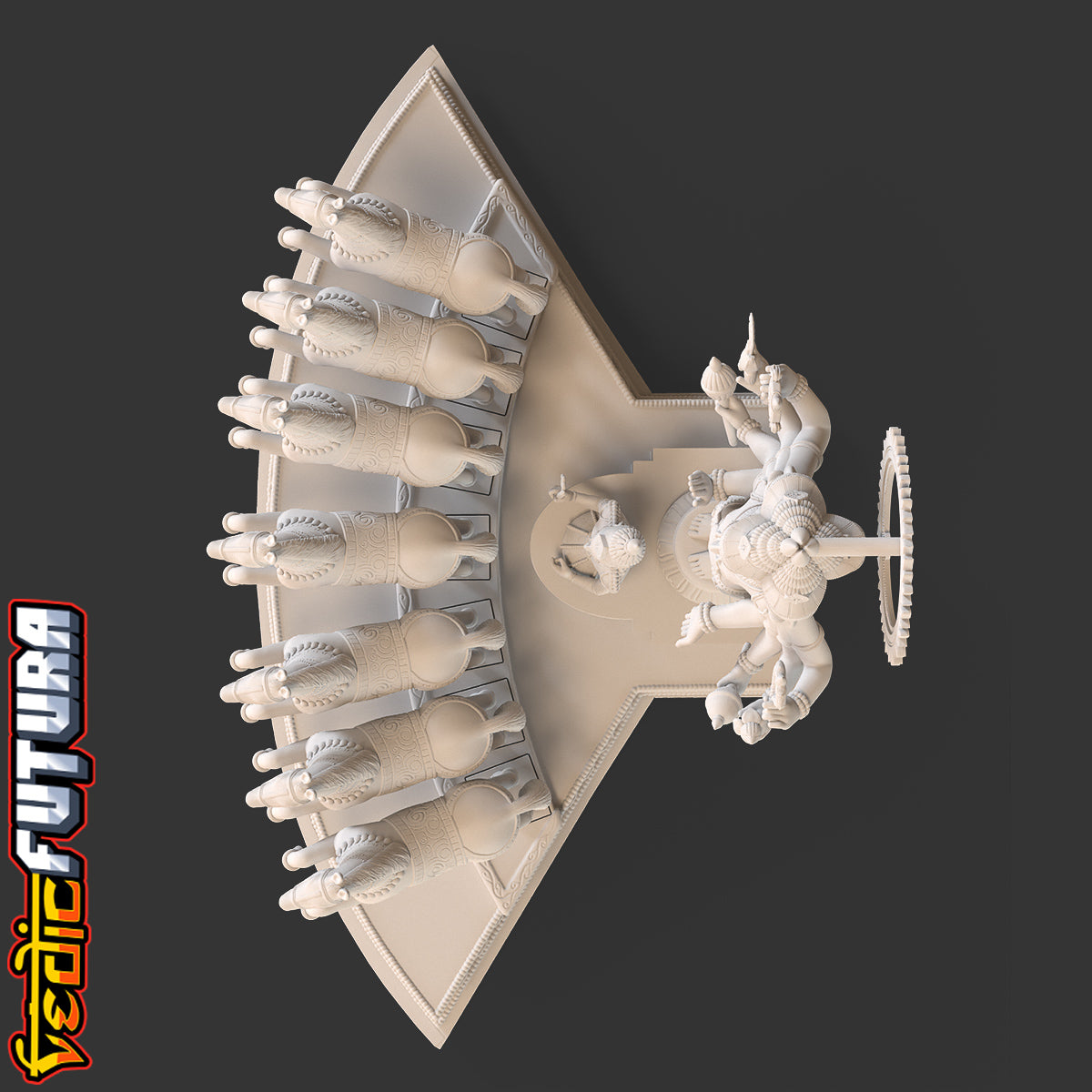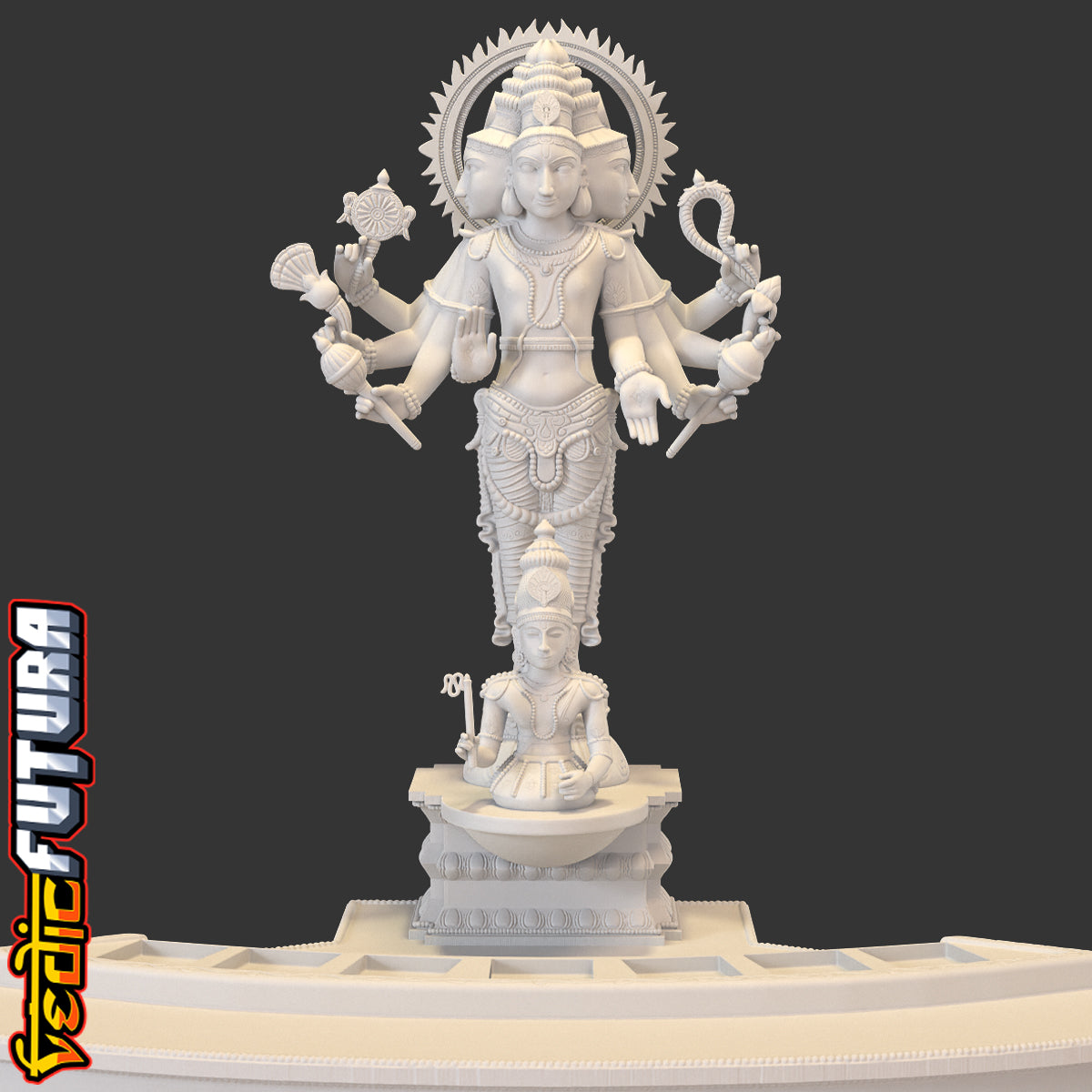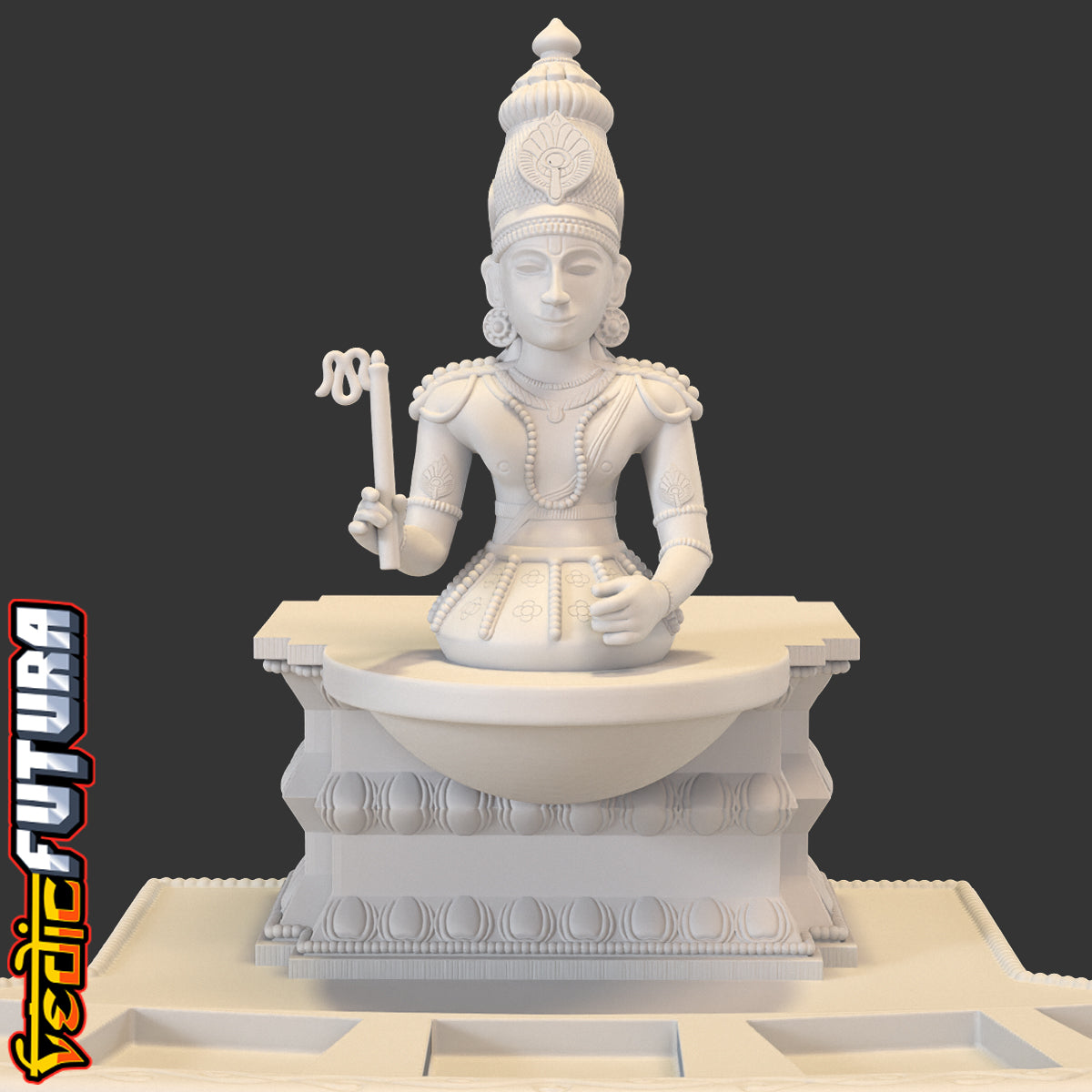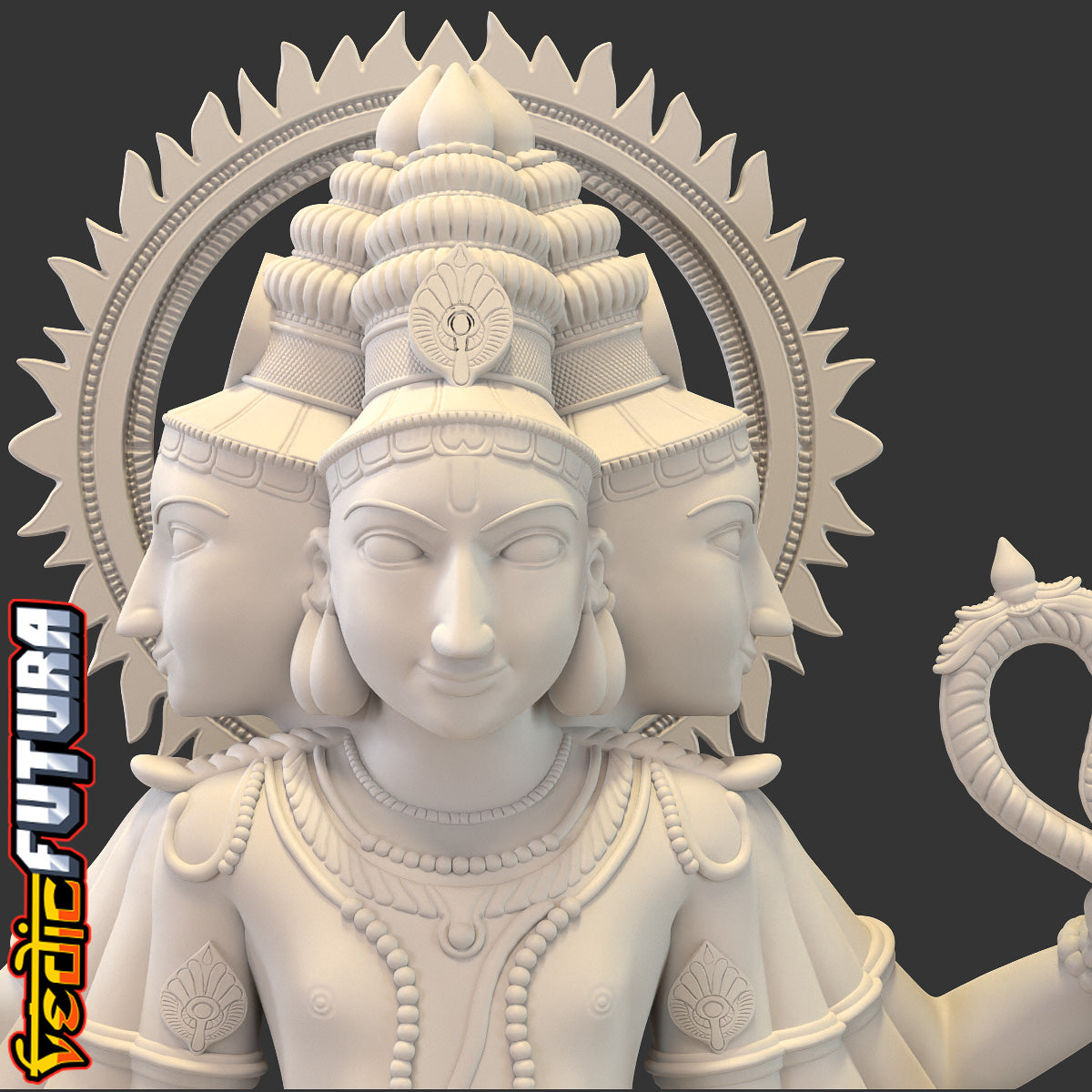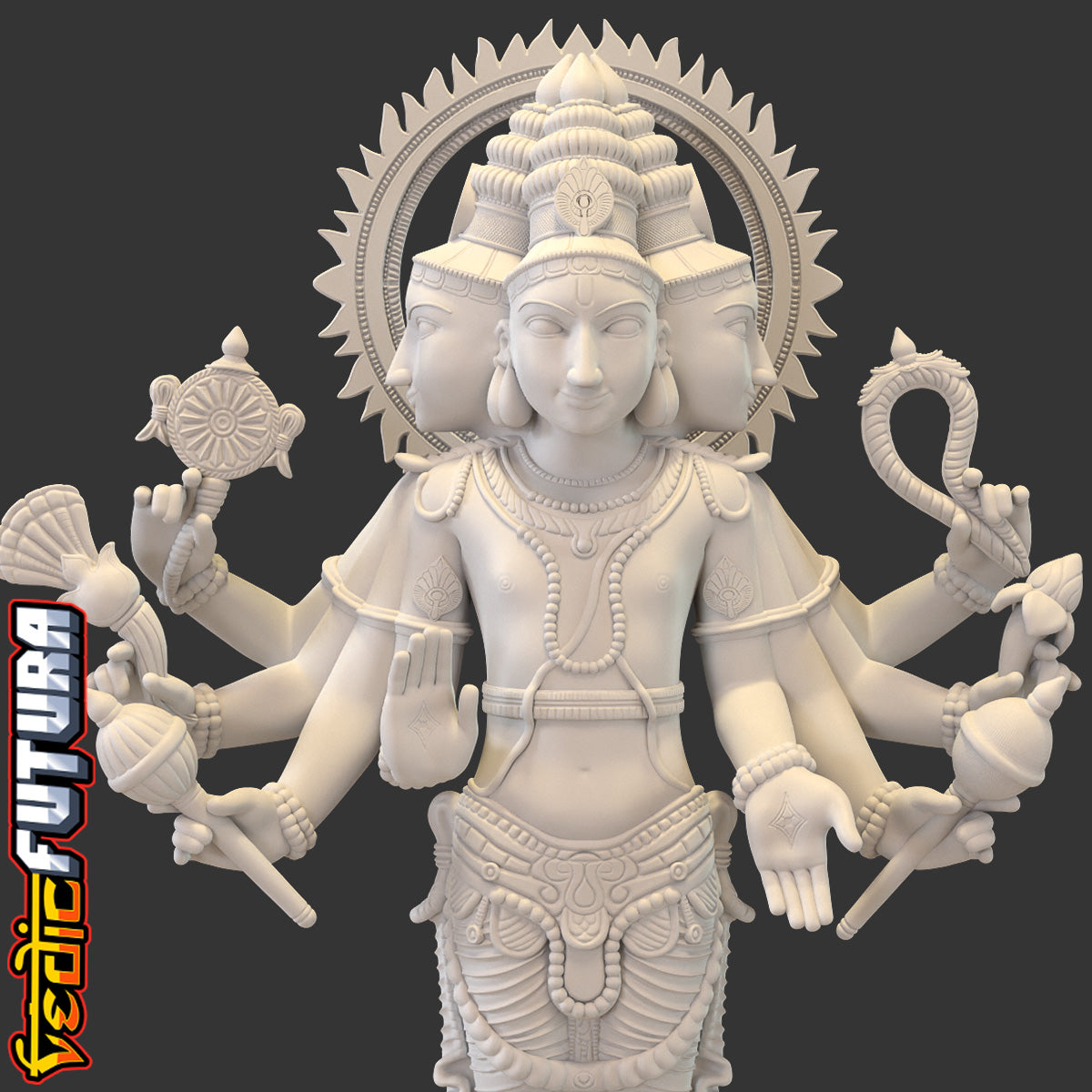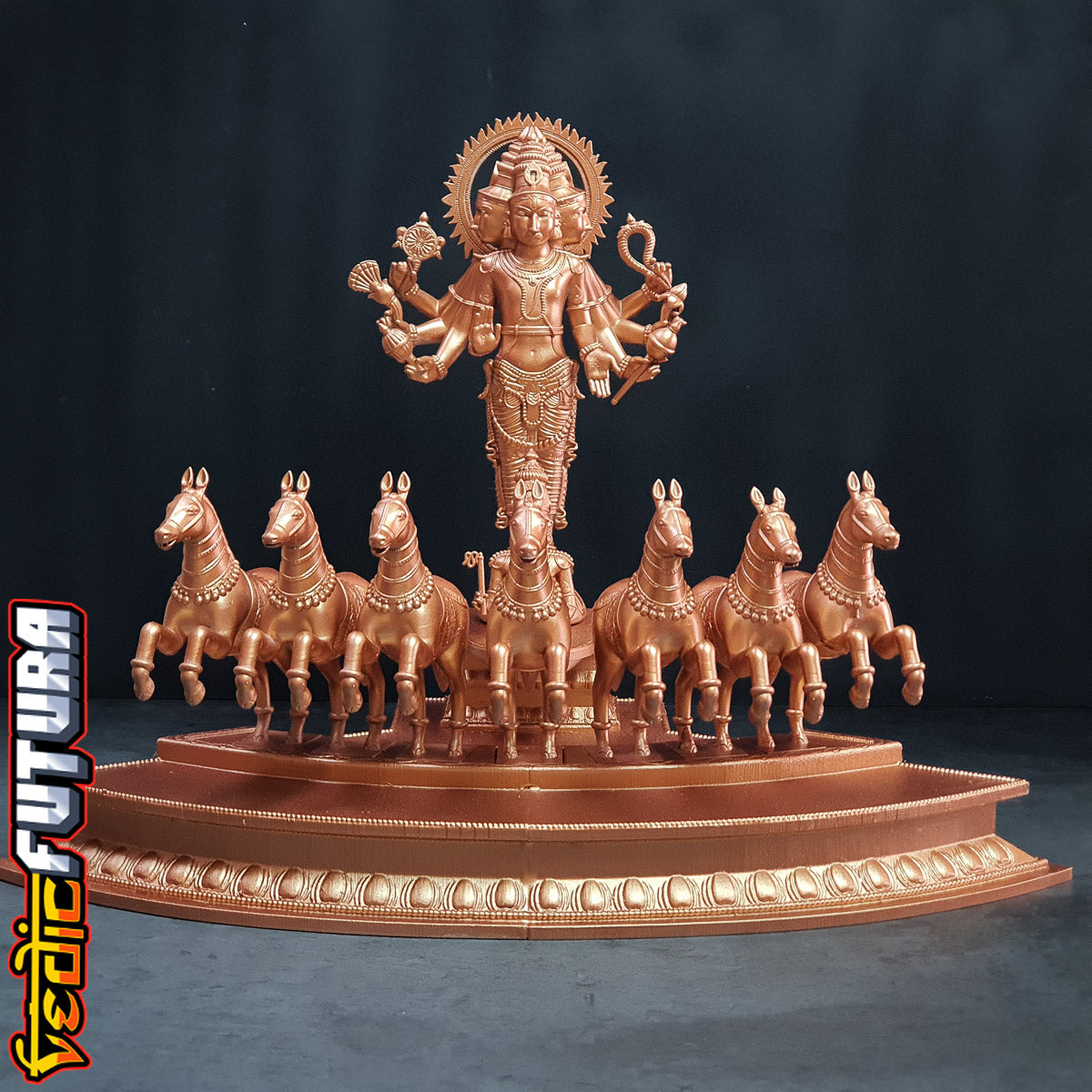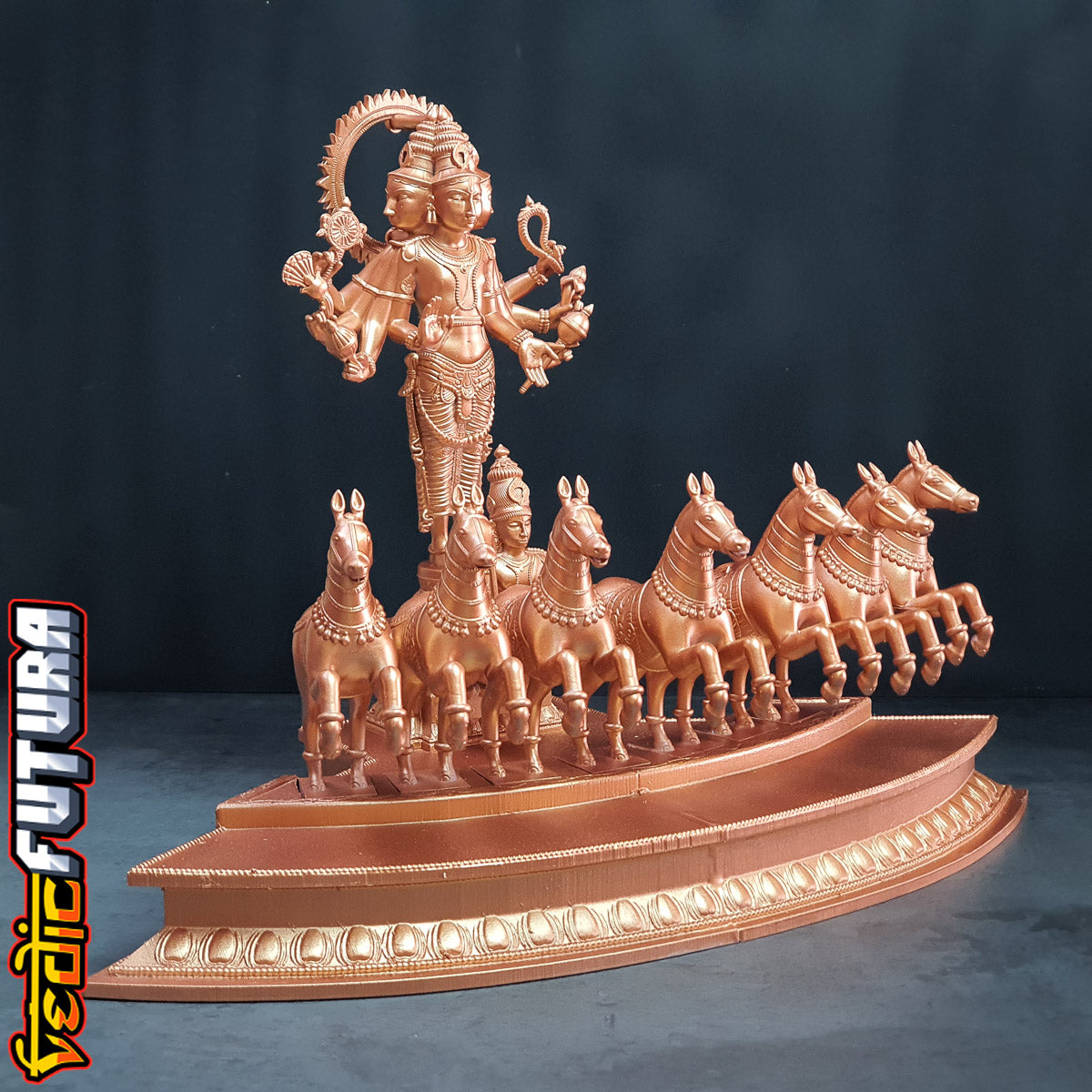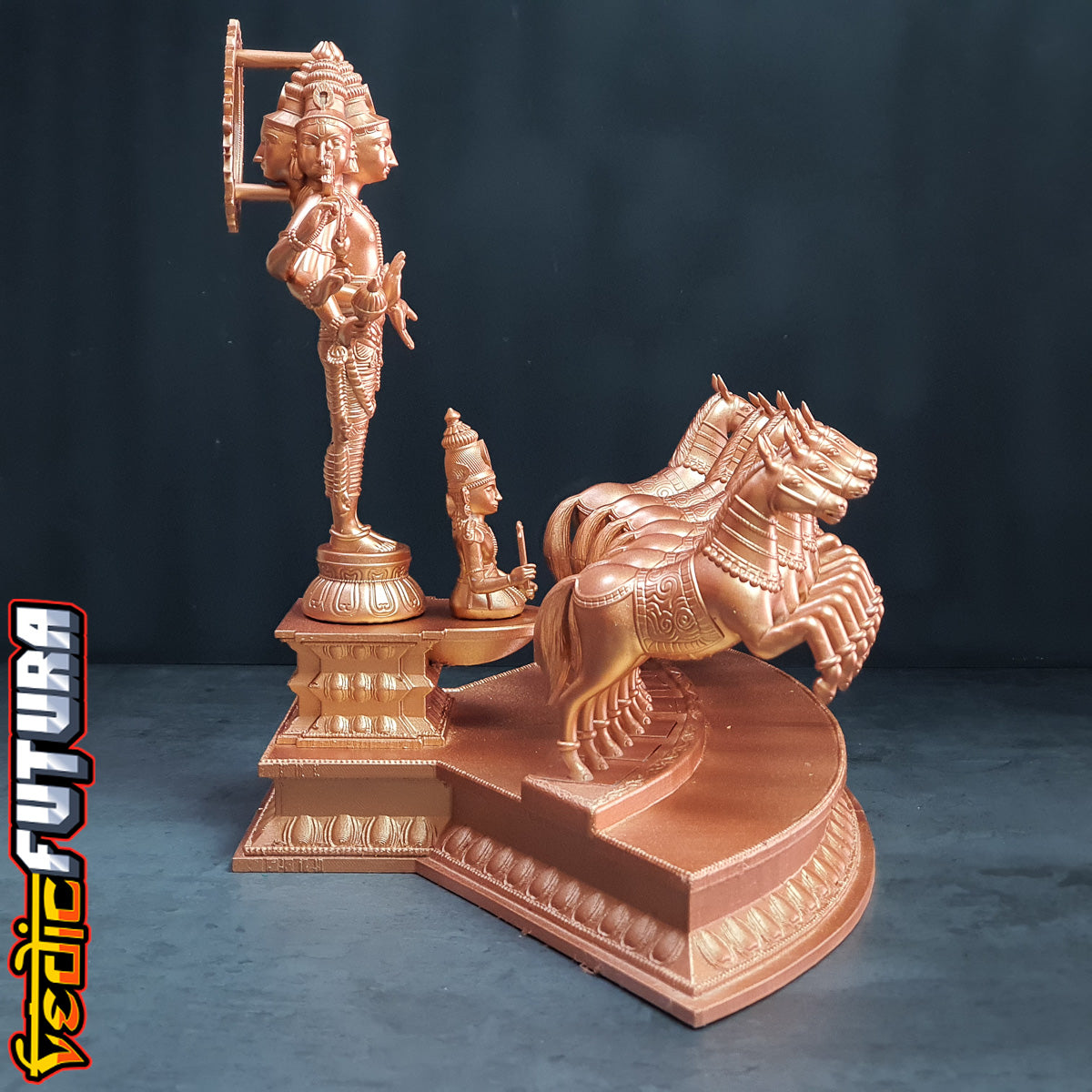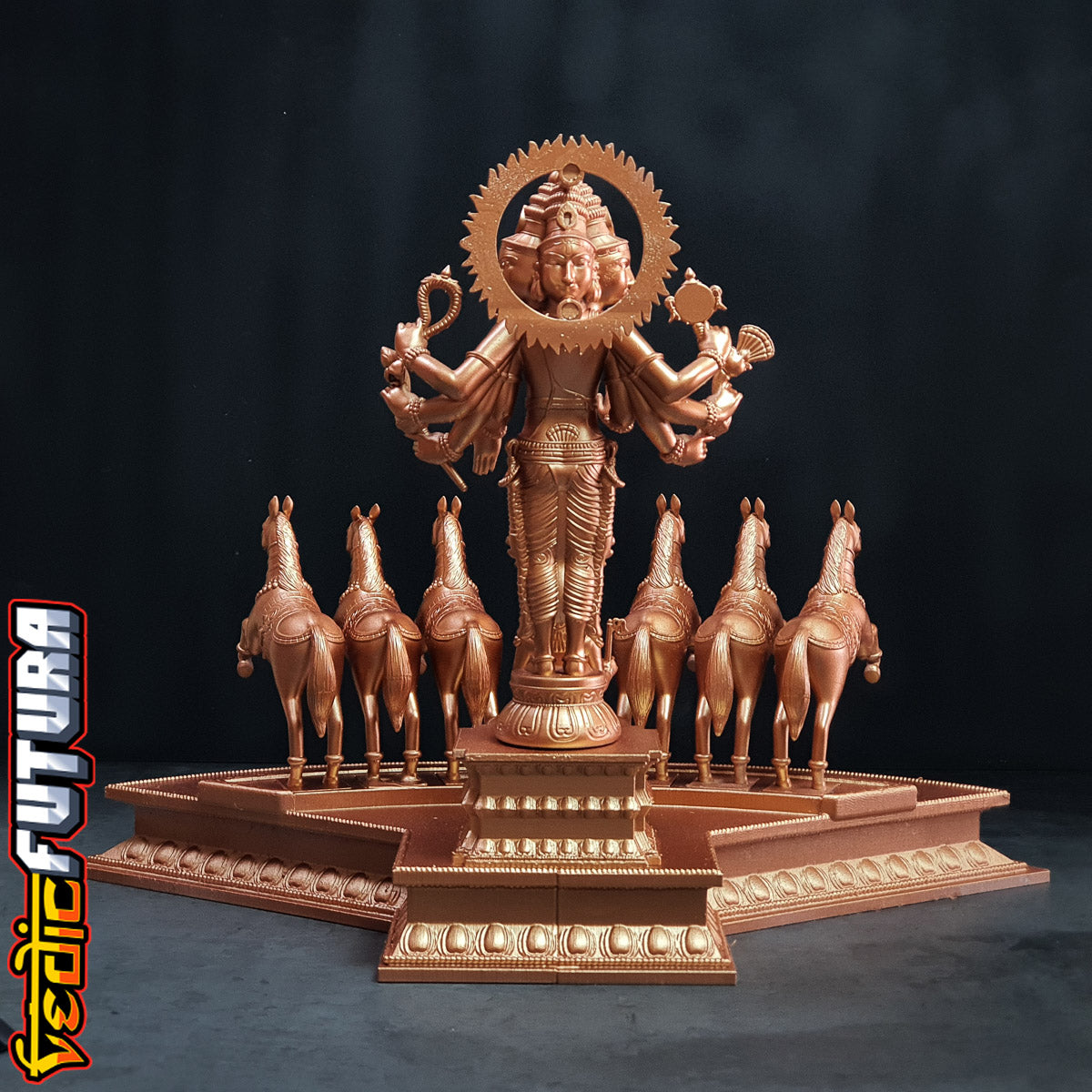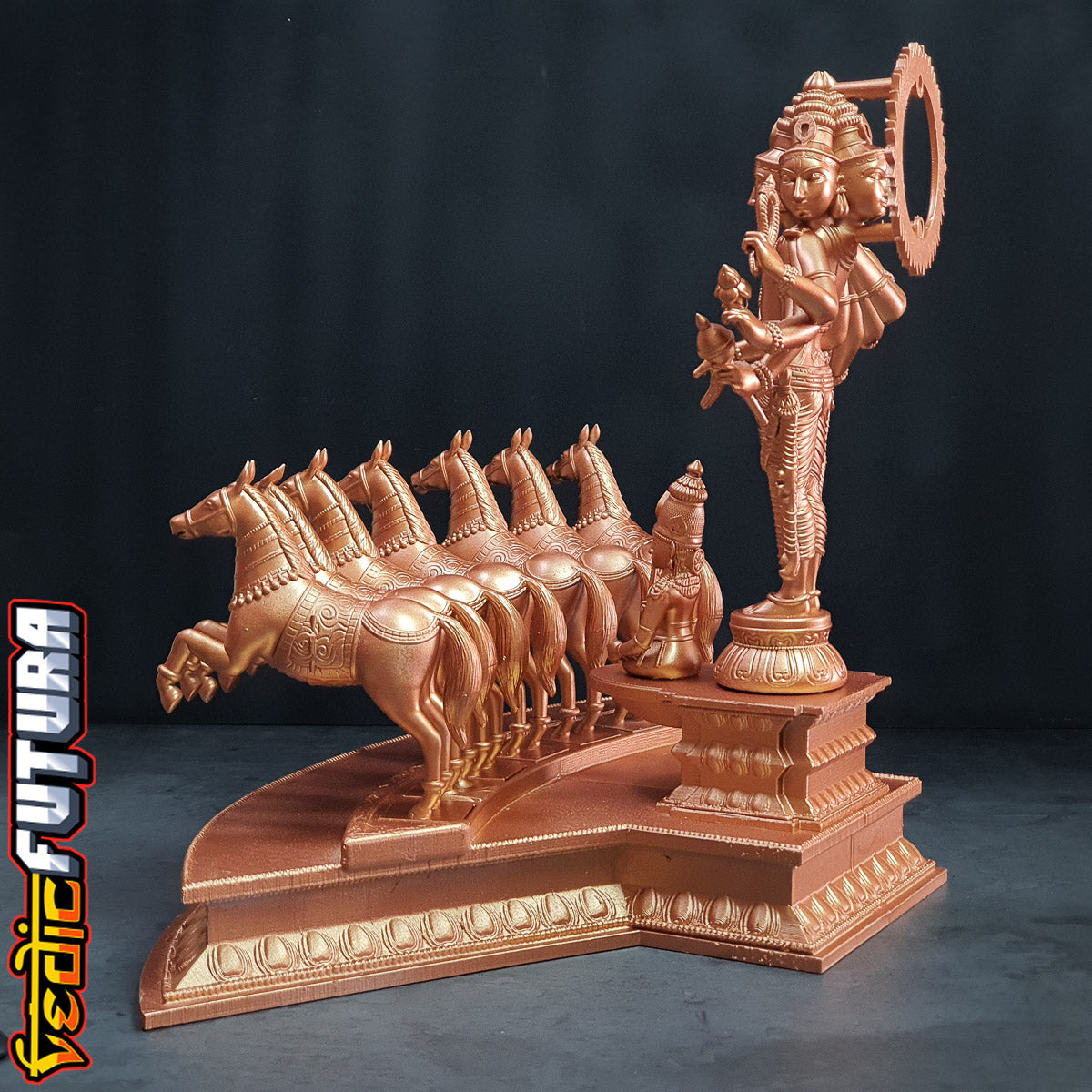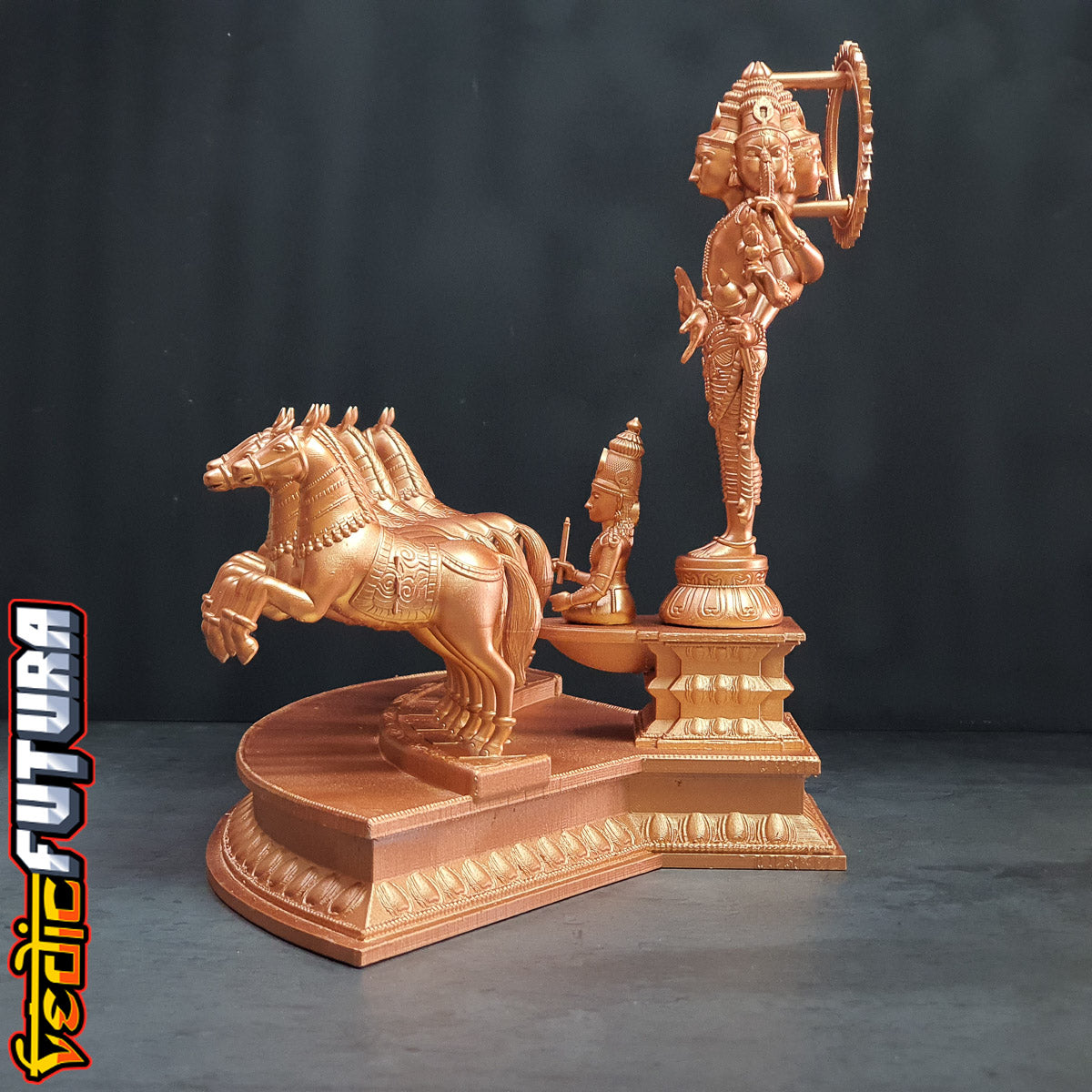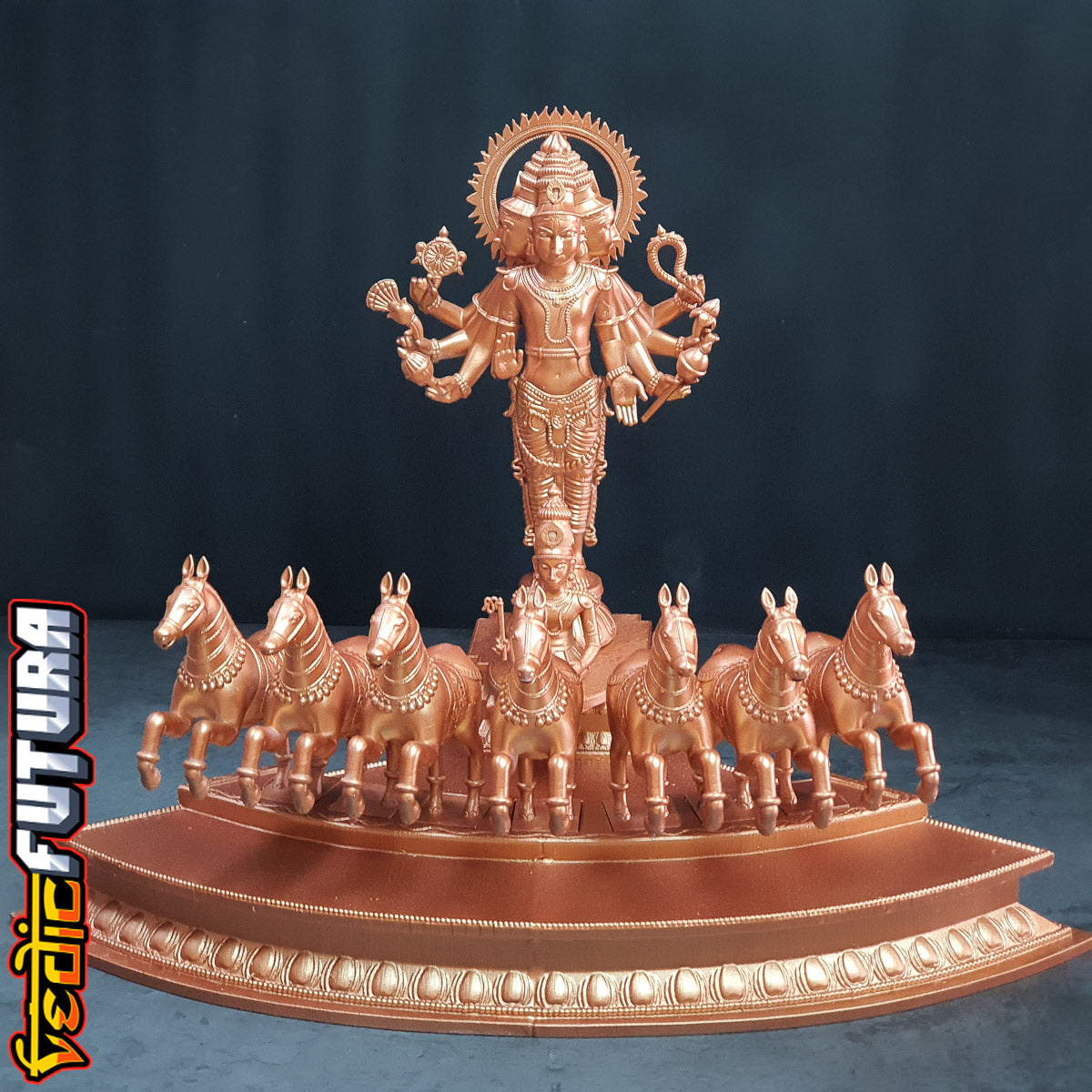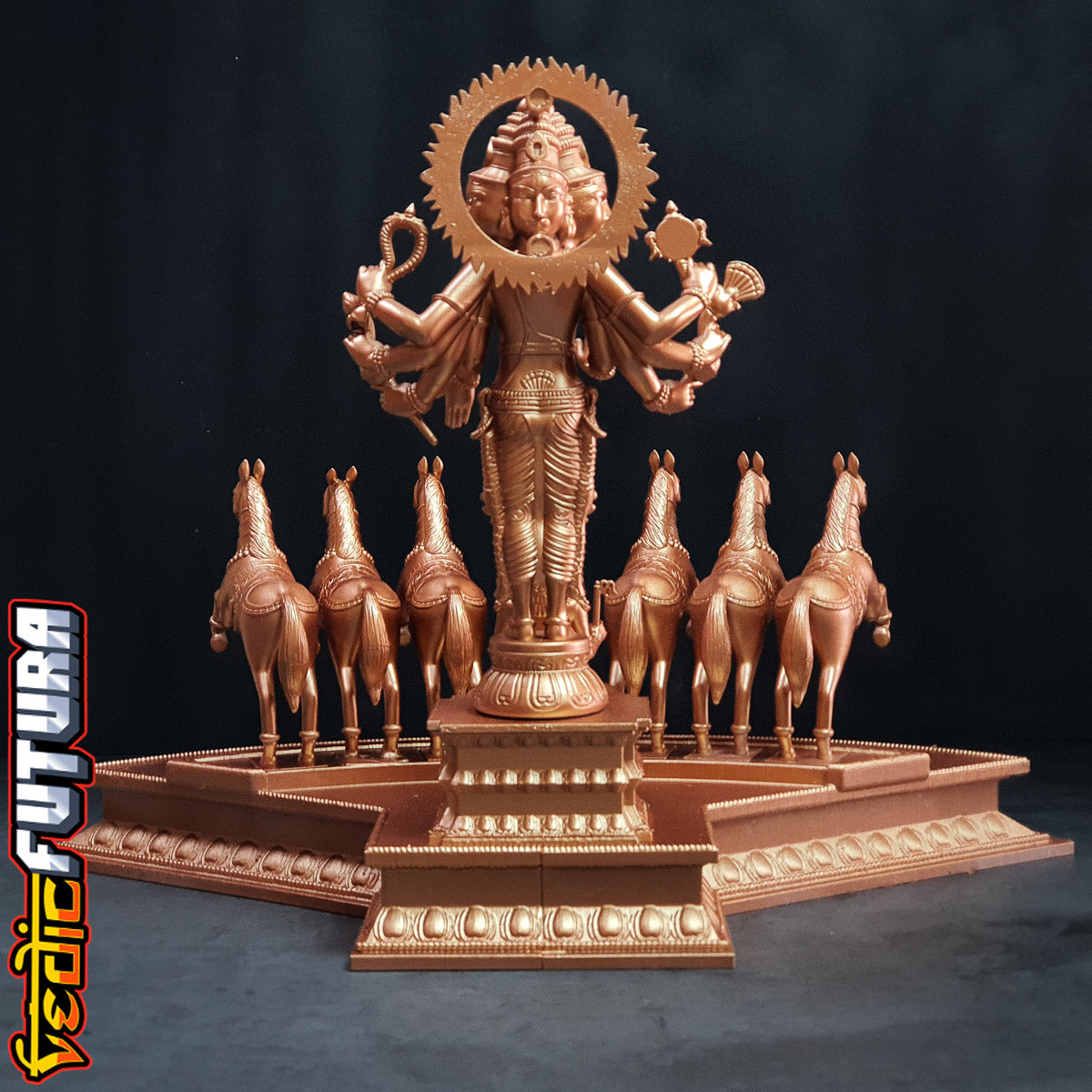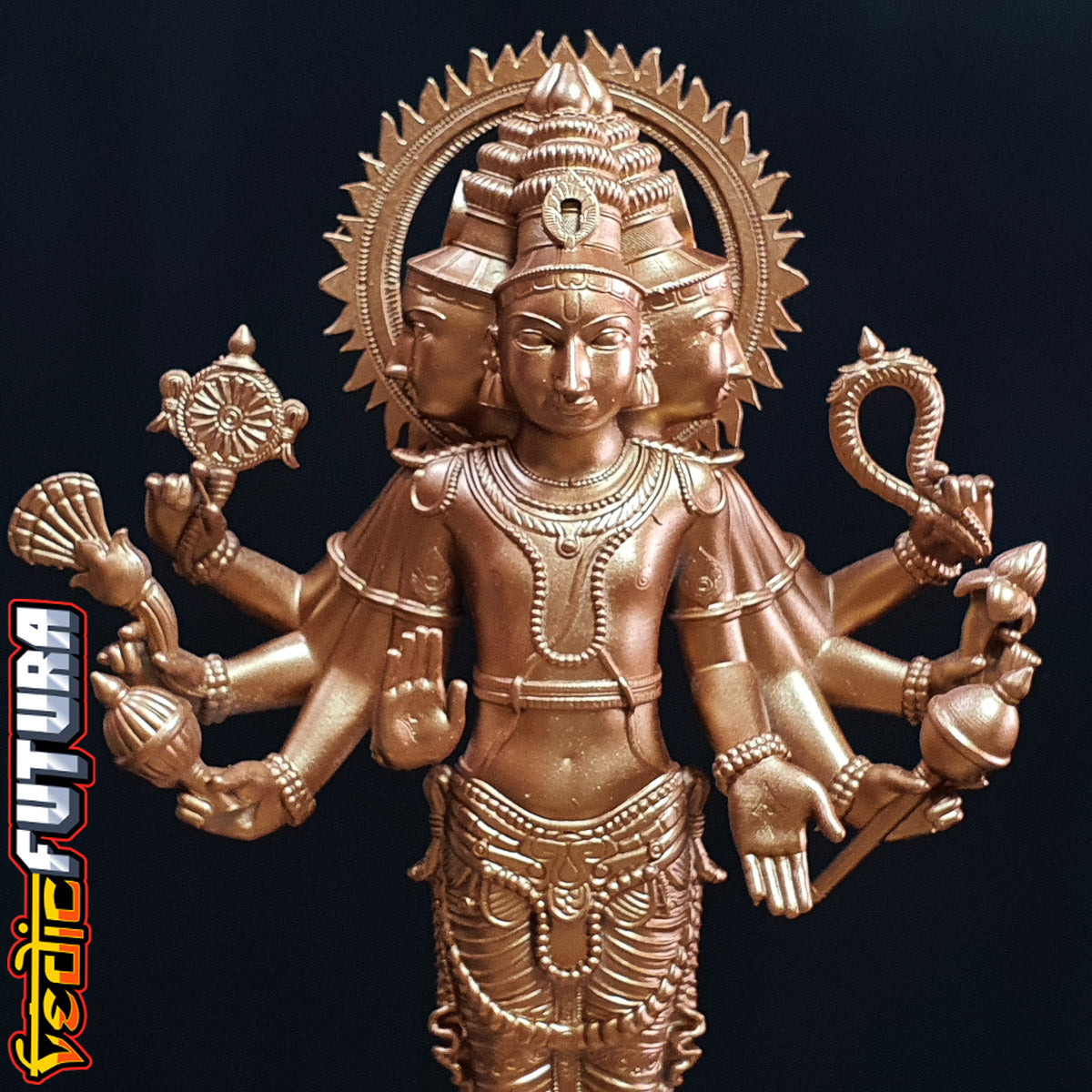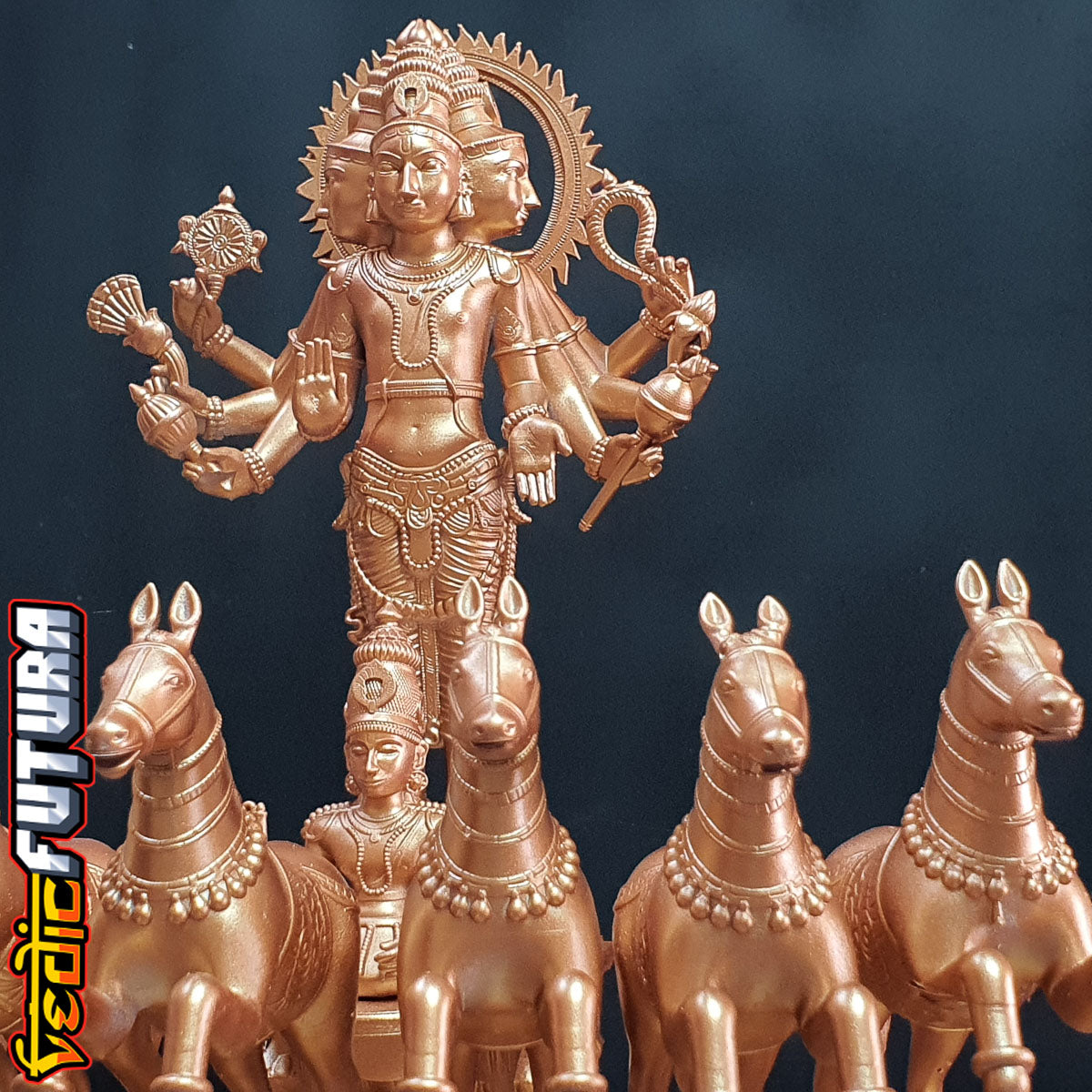Surya - The Sun, with 7 horses & his Charioteer Aruna
Surya - The Sun, with 7 horses & his Charioteer Aruna
Couldn't load pickup availability
Surya is the sun and the solar deity in Hinduism. The iconography of Surya is often depicted riding a chariot harnessed by horses, often seven in number which represent the seven colours of visible light, and seven days in a week.
Earliest representations of Surya riding a chariot occur in the Buddhist railings of the Mahabodhi temple in Bodhgaya (2nd century BCE), in the Bhaja Caves (1st century BCE), and the Ananta Gumpha at the Khandagiri caves (1st century CE). The iconography of Surya in Hinduism varies with its texts. He is typically shown as a resplendent standing person, riding a chariot pulled by one or more horses typically seven. The seven horses are named after the seven meters of Sanskrit prosody: Gayatri, Brihati, Ushnih, Jagati, Trishtubha, Anushtubha and Pankti.
Having survived as a primary deity in Hinduism arguably better and longer than any other of the original Vedic deities, the worship of Surya declined greatly around the 13th century, perhaps as a result of the Muslim conquest of North India. New Surya temples virtually ceased to be built, and some were later converted to a different dedication. A number of important Surya temples remain, but many are no longer in worship. In certain aspects, Surya has tended to be merged into Vishnu or Shiva, or seen as subsidiary to them.
Aruna is the charioteer of Surya. He is the personification of the reddish glow of the rising Sun. Aruna is also found in Buddhism and Jainism literature and arts. He is the older brother of Garuda. Wat Arun in Thailand derives its name from Aruna. Wat Arun is a Wat (Buddhist temple) in Yai district of Bangkok, Thailand, on the Thonburi west bank of the Chao Phraya River. The temple derives its name from the Hindu god Aruna and is among the best known of Thailand's landmarks. The first light of the morning reflects off the surface of the temple with pearly iridescence.
en.wikipedia.org/wiki/Aruna_(Hinduism)
Please Note: This is a digital 3D model (STL/3mf file) for 3D printing – not a physical object.
No physical product will be shipped.
After purchase, download links will be shown on your screen and sent to your email.
Please read the full website description and terms before purchasing.
